Welcome everybody once more to this instalment in a series concerning my 2014 trip to the Maritime Provinces of Canada which consisted predominantly of a road-trip with my dear friend Lynne in a fairly frail old campervan / RV which we had named Betsy. If you wish to read the story in it’s entirety, you may begin it here.
If you have read through I thank you and you will know that we had spent the previous afternoon exploring the wonderful Sherbrooke Village Museum, a “living museum” in Guysborough County, Nova Scotia. We had plans to have another full day as there is just so much to see and a late start had meant that we had only scratched the surface.
If you wish to join us for a look round and to find out what we did afterwards the please read on.
11th July, 2014.
It was only a ten minute walk from the rather attractive St. Mary’s Campground (now sadly closed down) where we had spent a couple of very peaceful nights but this day we unhitched Betsy as the plan, insofar as we ever had one, was a day at the Museum and then move on up the coast, there was still a lot to see.
We hadn’t got more than a few hundred yards until we pulled in at the very picturesque sawmill I had stopped to take images of the previous evening. Here is what happened.
Fantastic working history.
“I have mentioned the absolutely wonderful Sherbrooke “living Museum” which I do recommend highly and where we will return shortly. However, I suspect that many visitors to that excellent attraction do not realise that there are other outlying and equally interesting sites, all associated to the main Museum, which deal with some of the historical trades carried on in the area.
It is no exaggeration to say that the entire area around the village is a museum by proper definition.
This piece deals with a sawmill run in a traditional manner and named McDonald Bros. Sawmill. The name is hardly surprising as so many of the original European settlers in this region were Scottish. It is still run by a waterwheel running off a water source coming down from five lakes in the hills.

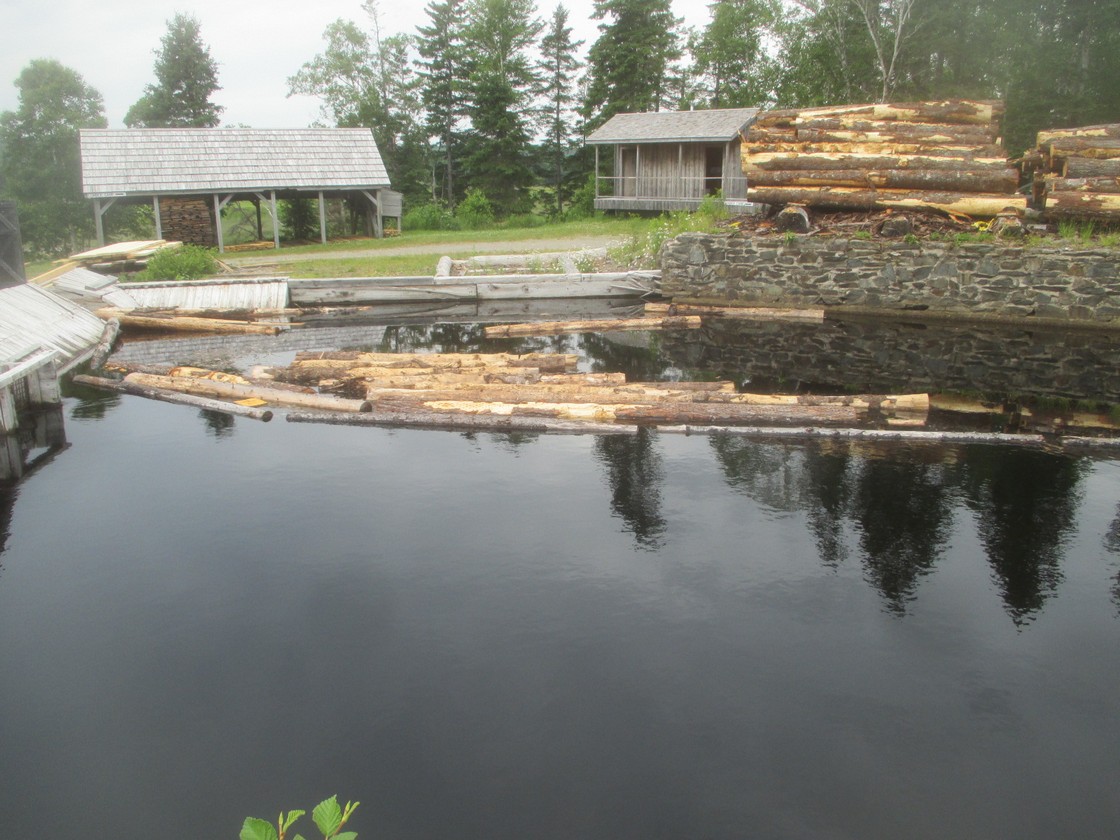

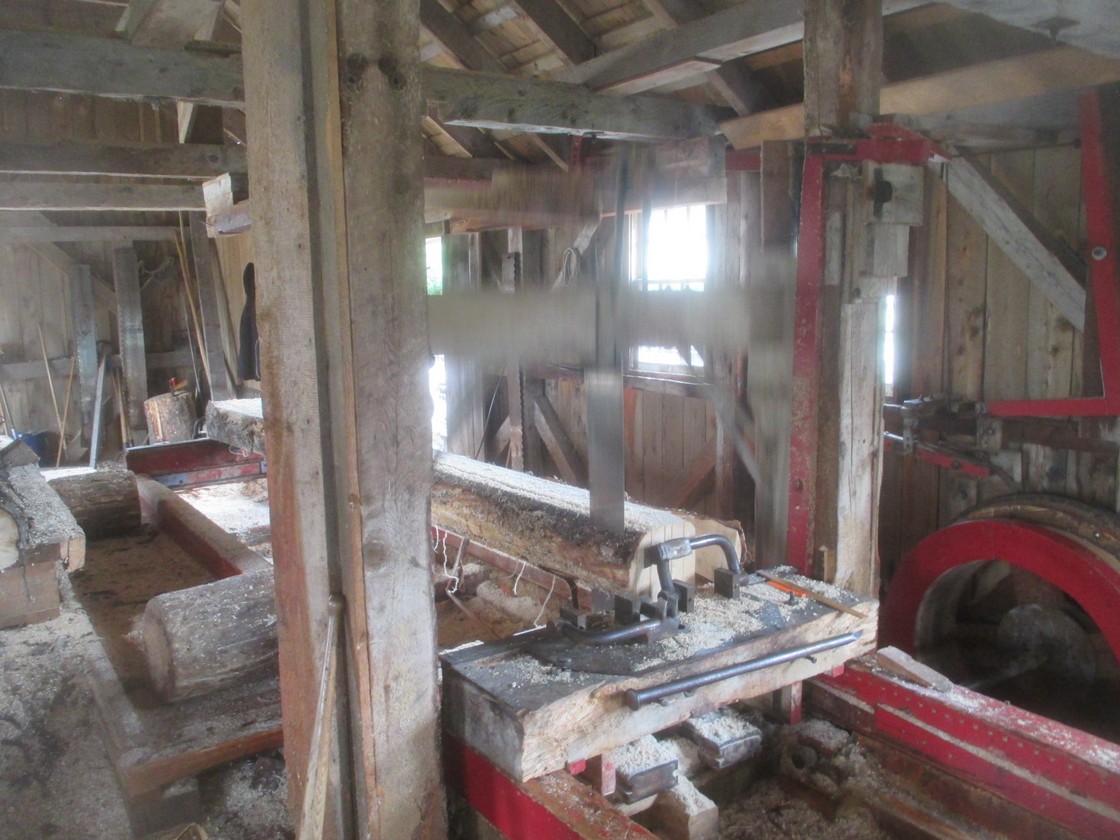


Although the mill is a replica, everything is totally authentic here and it is a complete, often mesmerising delight. To explain that last comment, watching a water-driven saw cleanly and accurately cleaving a very large tree trunk is an almost hypnotic experience. I could have stayed there all day.
I am sure that you are meant to have a pass for the main Museum to visit here but nobody ever asked us. We just wandered in and one of the two blokes working there engaged us in conversation as best he could over the din of the machinery.
The great joy of the sawmill is that it is a Museum building certainly but it is still a very active business. Apart from supplying the many needs of the main Museum (thereby lending that place even more authenticity than it inherently has), it also takes private commissions. I am sure this helps considerably to keep the whole Museum village running financially.
I loved this place inasmuch as it had heavy machinery crashing about but you were still allowed to get really close to it, it was not a “stand back there and watch” sort of experience. I could smell the freshly-cut wood, the noise of the saw was deafening, I watched “up close and personal” a complete plank being cut off. It may be still maturing now or it may be part of a Nova Scotian building. If it is not yet, I know it will be. It is a privilege to see this and you really should visit.
To the logistics now. It is a little way out of town but easily walkable and a very pleasant walk it is (just watch out for the main road although it is pretty devoid of traffic). We visited in the height of the tourist season here and I formed the impression that people do not really come as we were the only visitors. This is a shame because it is a fantastic piece of living, still active, social history.
I enjoyed it so much I even attempted a little videography, which you can see here and here. I really wish I knew how to splice them together, sorry!
We didn’t even trouble Betsy to travel to our next point of interest.
He’s a lumberjack and he’s OK.
“OK, the title of this piece is unashamedly taken from the classic Monty Python sketch / song about lumberjacks and if you have not seen or heard it then I suggest you do.
Canada is inextricably linked in the world’s consciousness (amongst other things) with lumber and lumberjacks. I suppose in a country with so many trees available it is almost inevitable and it remains a major part of the economy to this day.
We were going to see a lumber camp. Whilst not original, it is a very sympathetic reconstruction of what such a place would have been like and is very interesting.

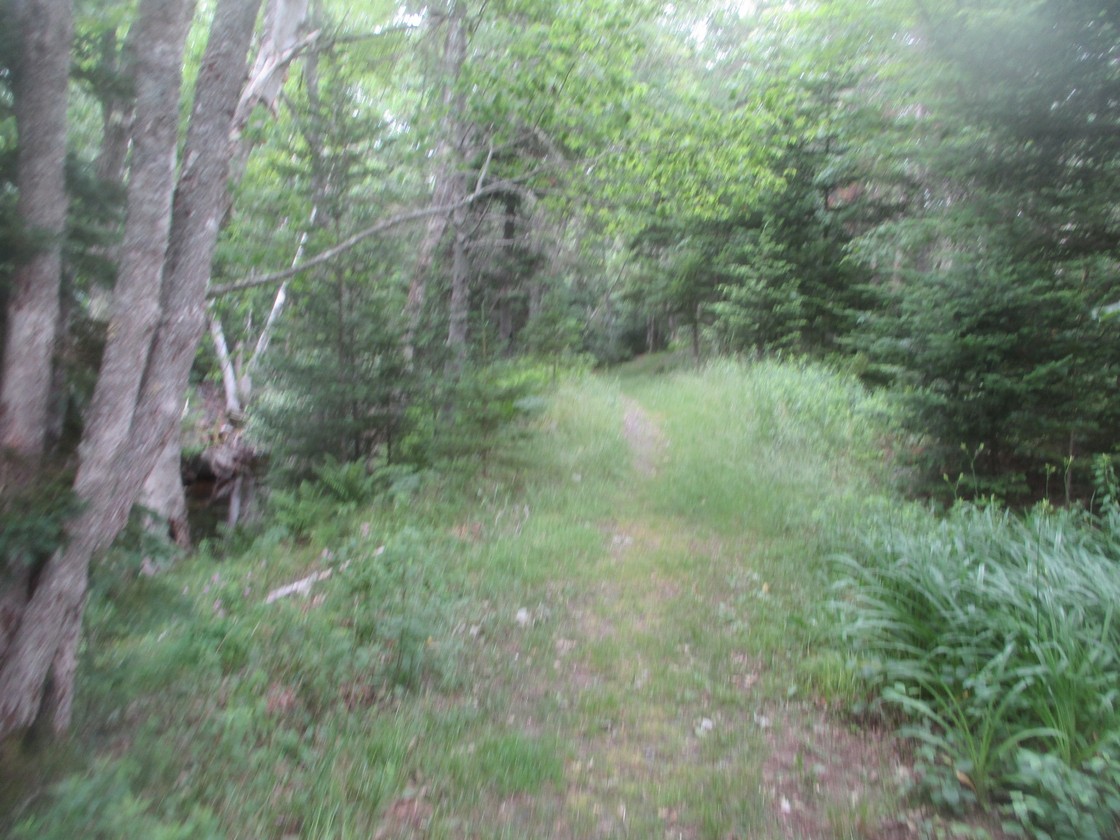
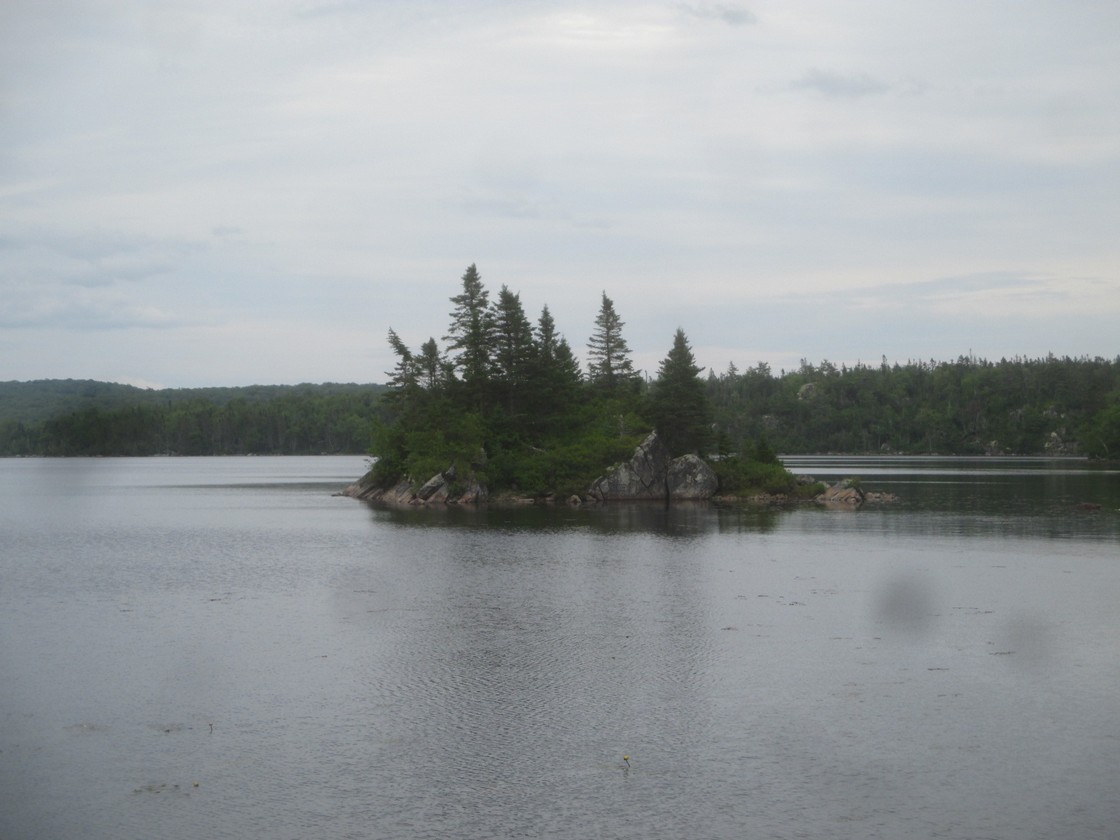

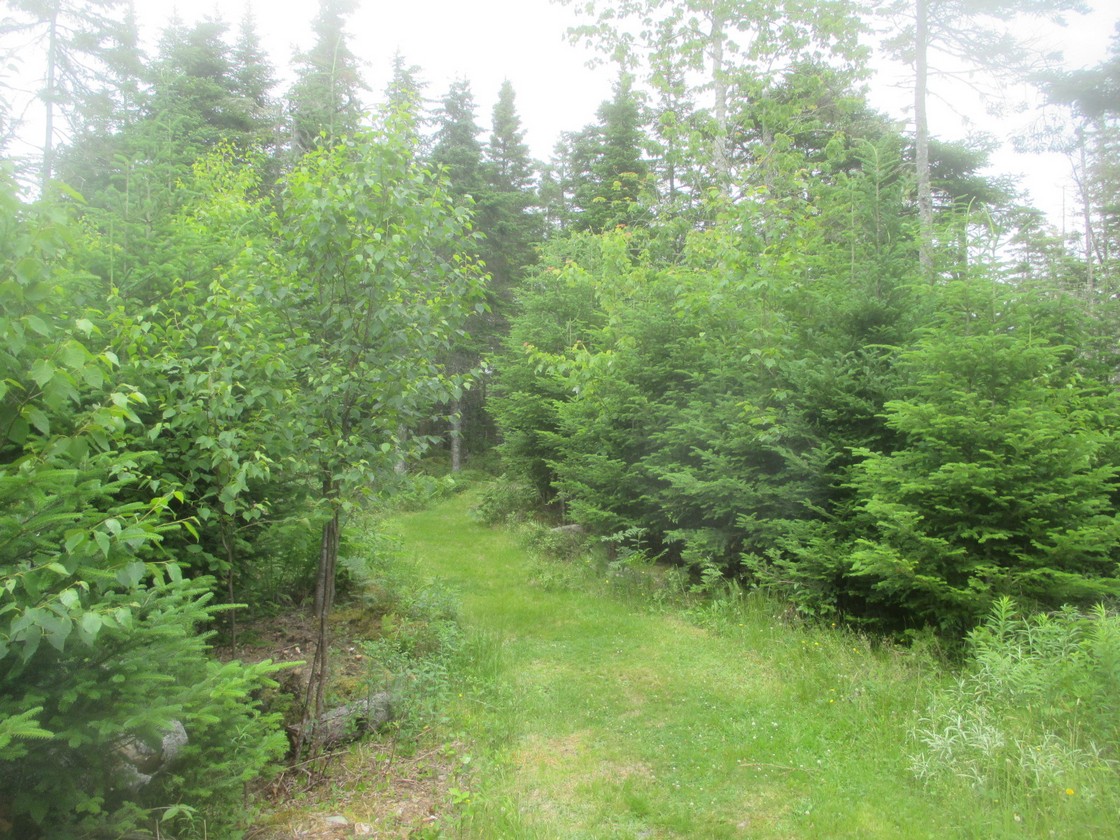
You start off by going down a slightly overgrown path which you can find if you face the front of the stamp mill and look to the left, it is signposted. Don’t panic, it is not strenuous walking although a brief word of warning here as the mosquitoes can be a bit of a nuisance in summer so have your repellant on.
Carrying on through completely tranquil woodland you cross over a pretty rickety looking (although perfectly sound) footbridge and briefly skirt the shore of a delightful lake before coming upon the lumber camp itself.
As I say, it is of modern construction (as far as I can tell) but built to a traditional design and the standard of the building indicates that there must still be some very skilled artisans in the area. I spent ages looking at how the place was actually put together and still am not quite sure how they did it.
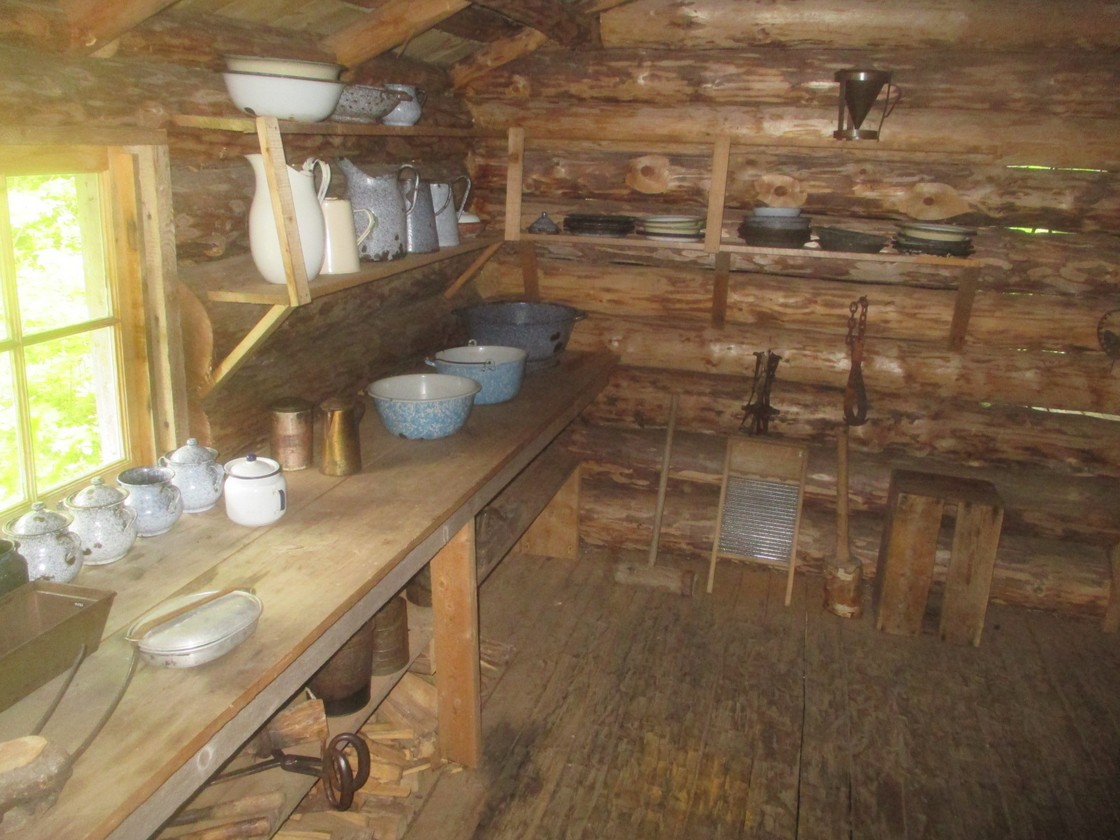
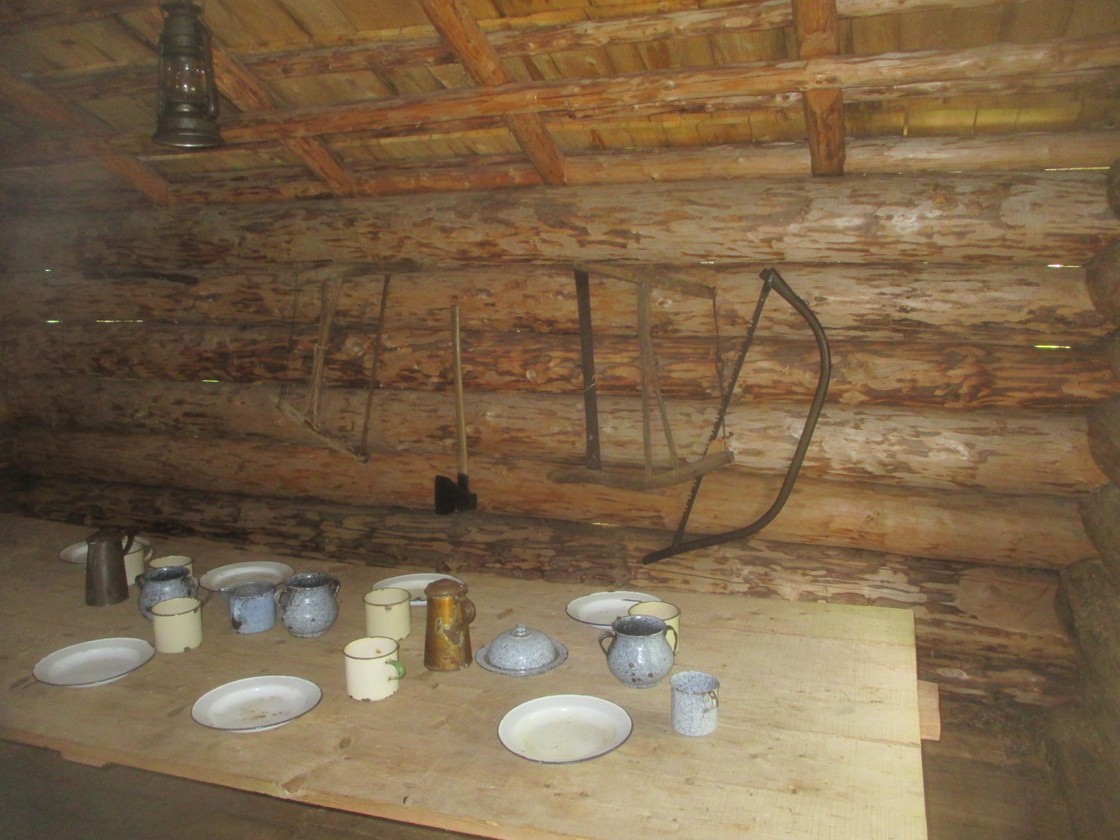

When you venture inside it is a reasonably sized communal living / sleeping area where the lumberjacks would spend the entire season (i.e. when the weather was suitable) and be more or less entirely sell-sufficient as they did it. Presumably supplies were brought in on a regular basis but they seem to have lived a fairly independent existence.
They have a number of original artefacts here ranging from cooking utensils to crockery, old lumberjack tools and even a washboard. What amazed me was that the place was completely open and we did not see a member of staff when we visited. Try that where I live and the place would have been cleaned out in about 30 minutes flat with the exhibits sold to antique shops!
There is not too much in the way of annotation or information and I think that somewhat added to the charm of the place as it didn’t feel like a Museum, it was as if you had literally just stumbled on a genuine lumber camp in the middle of the forest.
We had the place entirely to ourselves even in the height of the tourist season and I don’t know why more people don’t visit as I did rather like it. Like the sawmill I suppose you are meant to have admission tickets for the main village Museum to visit here but of course nobody was there to check ours. I am not sure on this.
It is well worth the short walk and risking the mosquitoes to visit this interesting place.”
I mentioned the stamp mill above and that is where we went next.
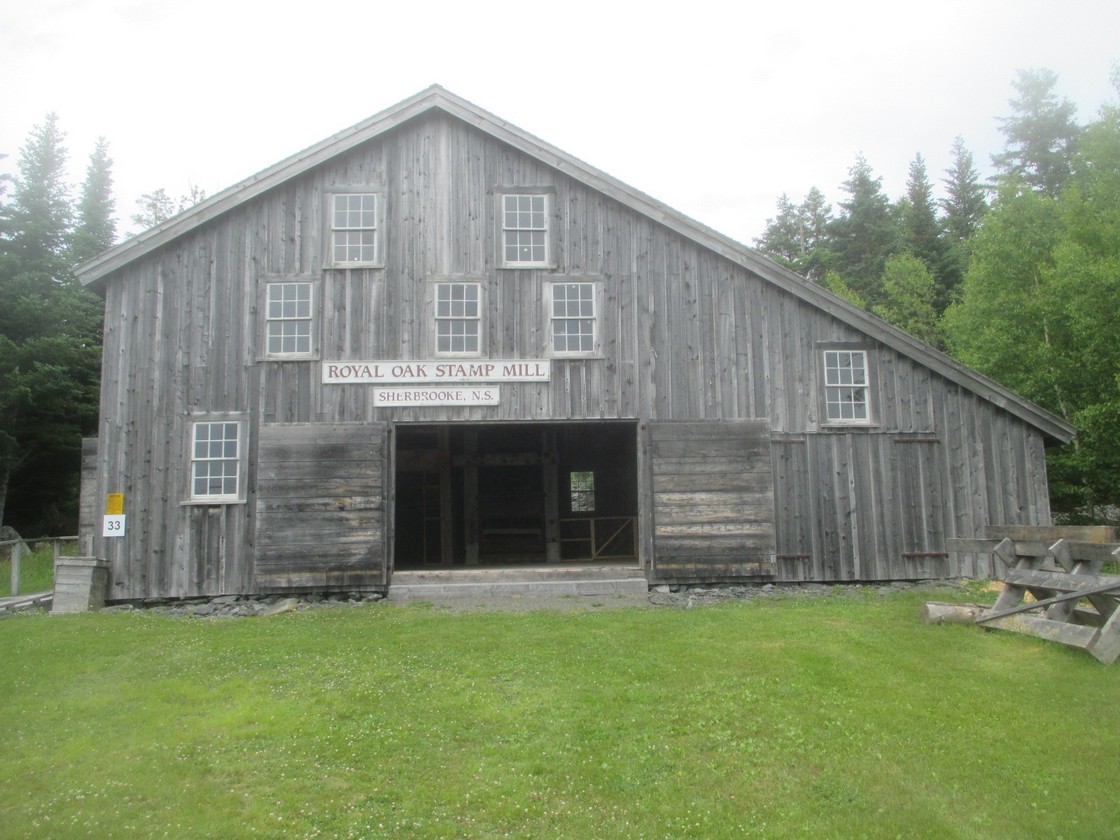




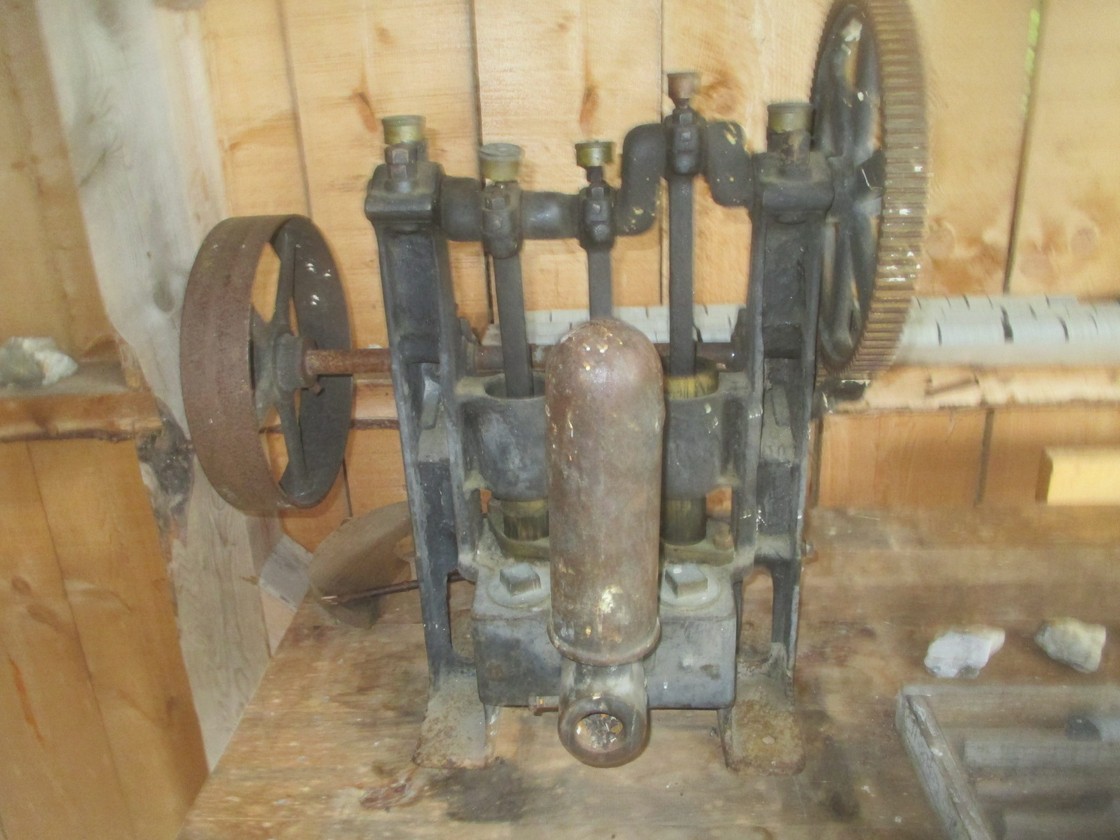
“The stamp mill is probably the least interesting of the three “remote” sites and it does suffer a little in comparison to the others which are magnificent. Still, it is worth spending a little time and it will realistically only take you about 10 or 15 minutes to have a good look around.
If you are not sure what a stamp mill is, and I had never heard of one before visiting here, it is all to do with the brief “gold rush” from 1861 and which only lasted about 20 years. There is even a small community nearby called Goldenville! The purpose of the stamp mill is to take the ore-bearing rock and pulverise it to release the precious metal within. Simple as that.”
Time now to head back into the village proper for a good look round, we knew there was still so much to see.

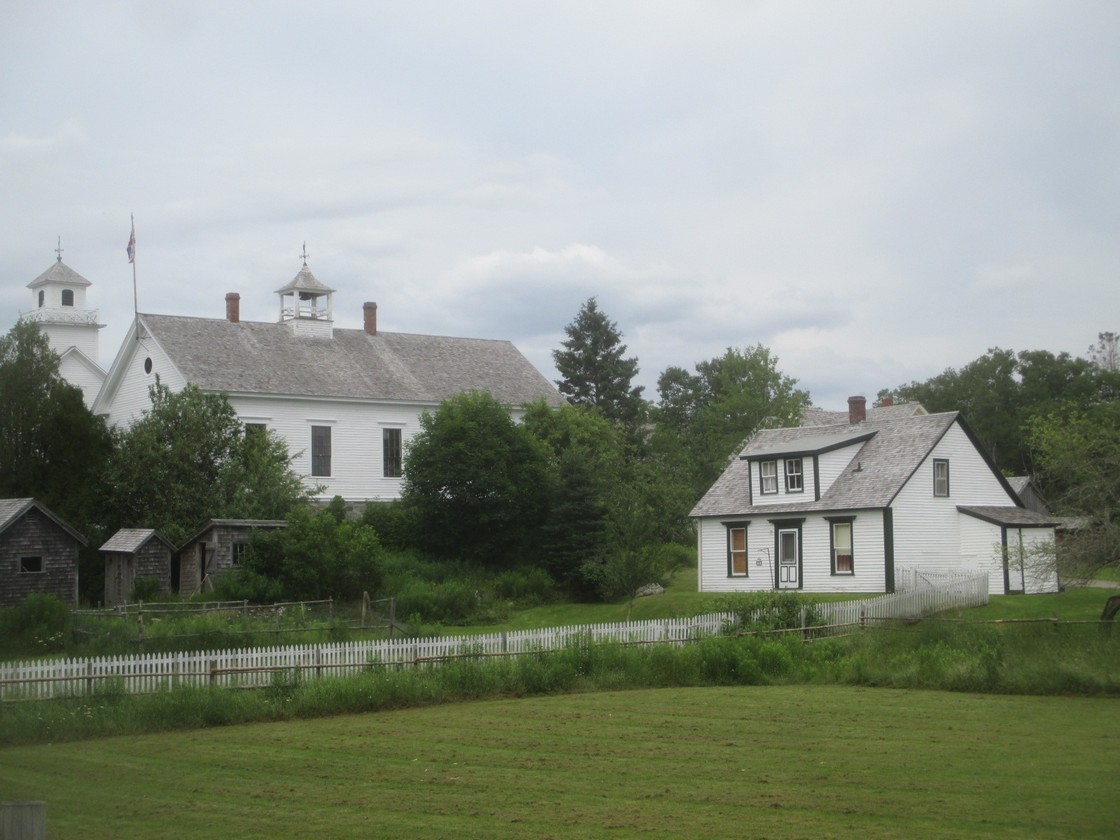
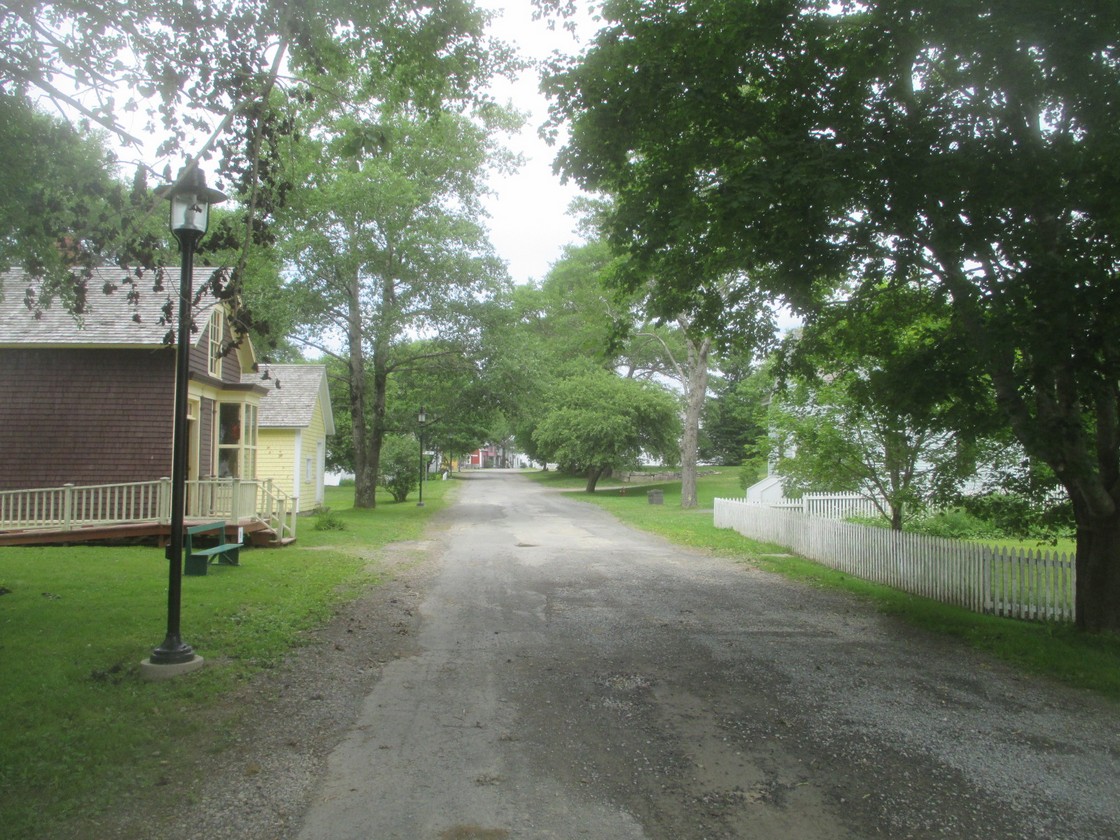
We started at the Hollingsworth and Whitney Company Store which we had seen the previous day but not visited and which now serves as the gift shop for the Village.
H&W were a pulp and paper company, based in Maine, USA and it would make sense for them to expand into such a lumber-rich area as this with a relatively short sea journey connecting their plant to the Guysborough County area. They certainly needed plenty of wood as, at their peak in the late 19th / early 20th century, they were producing a staggering 235 tons of paper a day.
There is a good selection in the giftshop of both traditional items made in the Village and more contemporary souvenirs but we didn’t buy anything. On leaving the shop we could hear the unmistakable sound of hammer ringing on anvil and we went straight back to the nearby forge where the smith was hard at work.
I already had plenty of images from the day before (see previous post) so I thought I’d be brave and try a little videography which is a discipline I was (and still am) a complete novice at but you can see the result here with the smith hammering out the souvenir nail I told you about before.
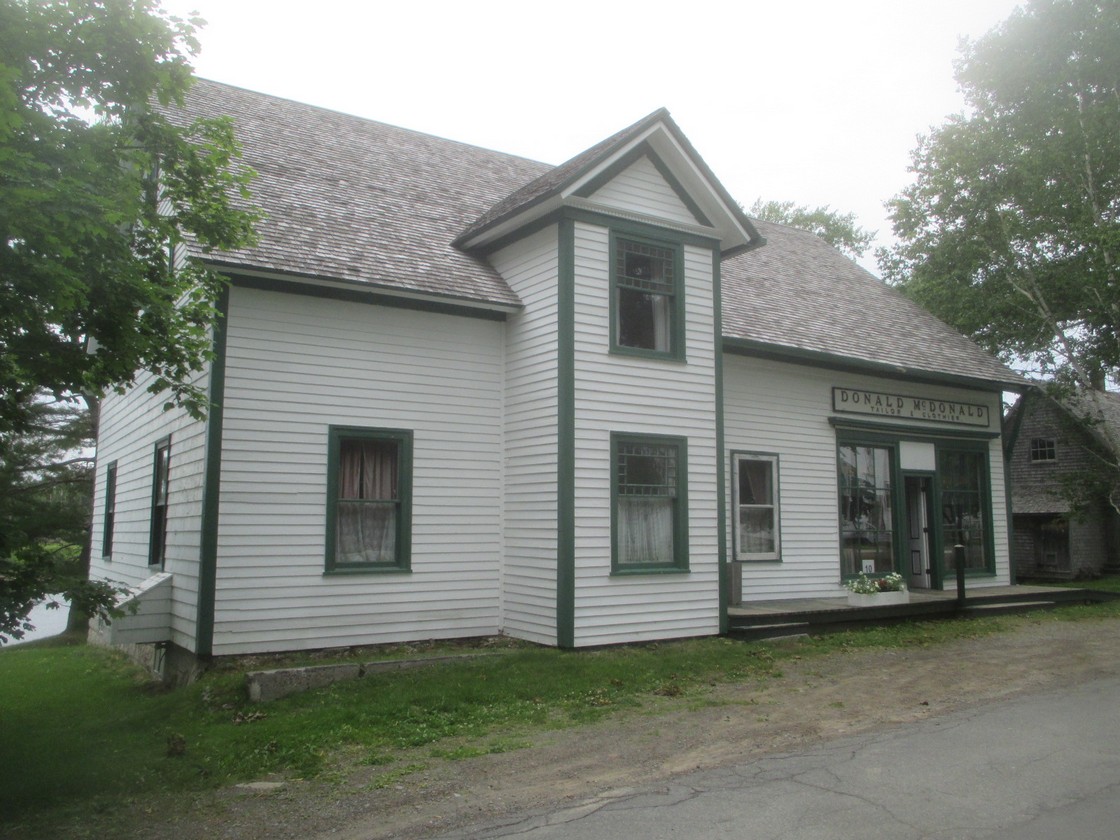




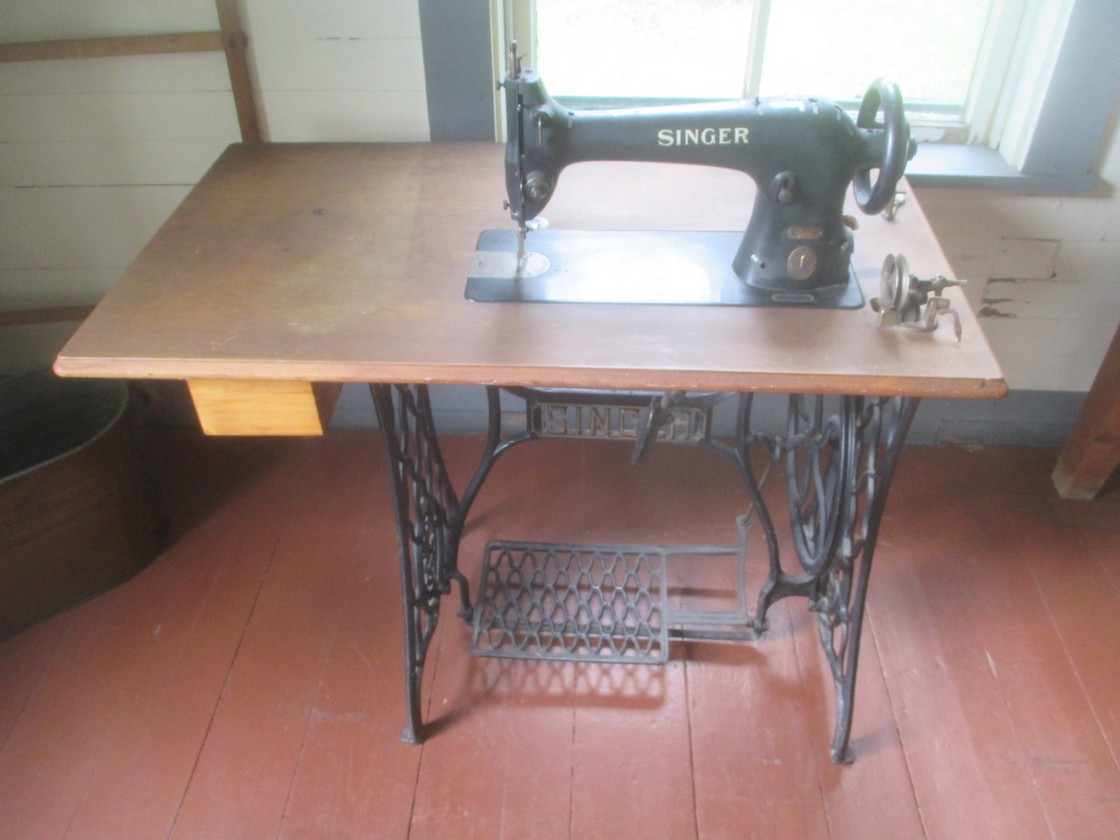
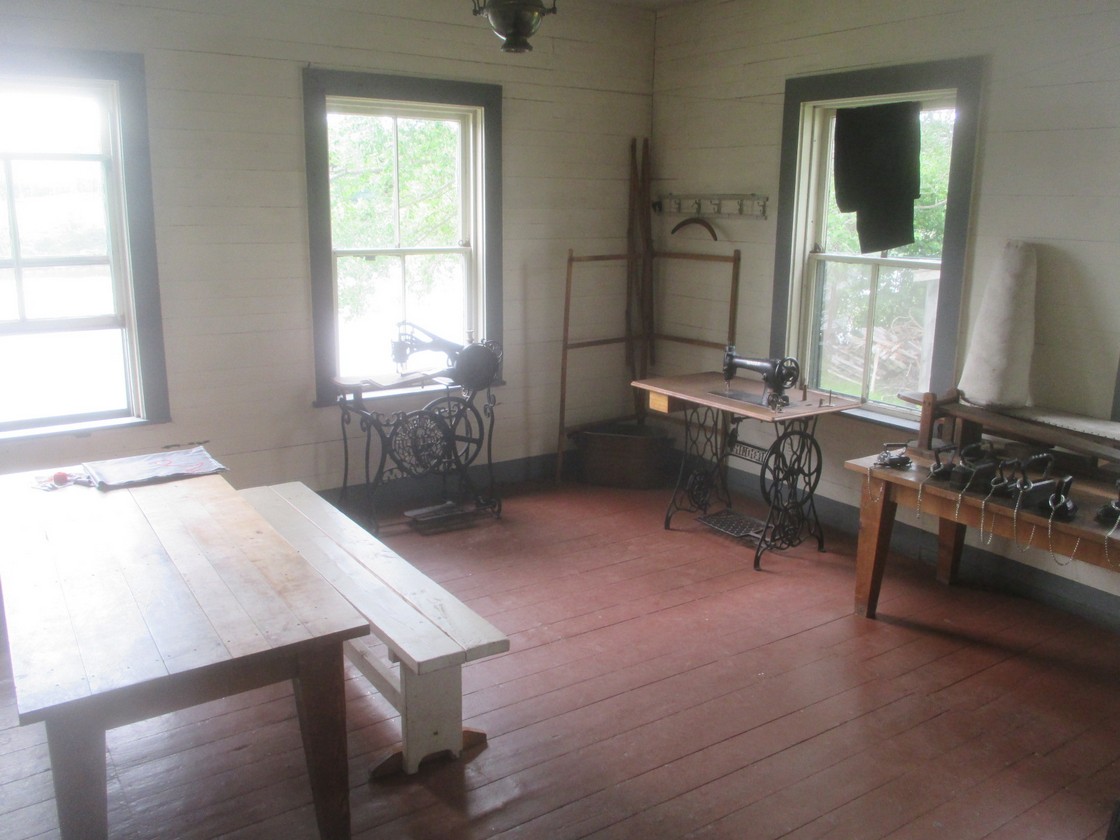
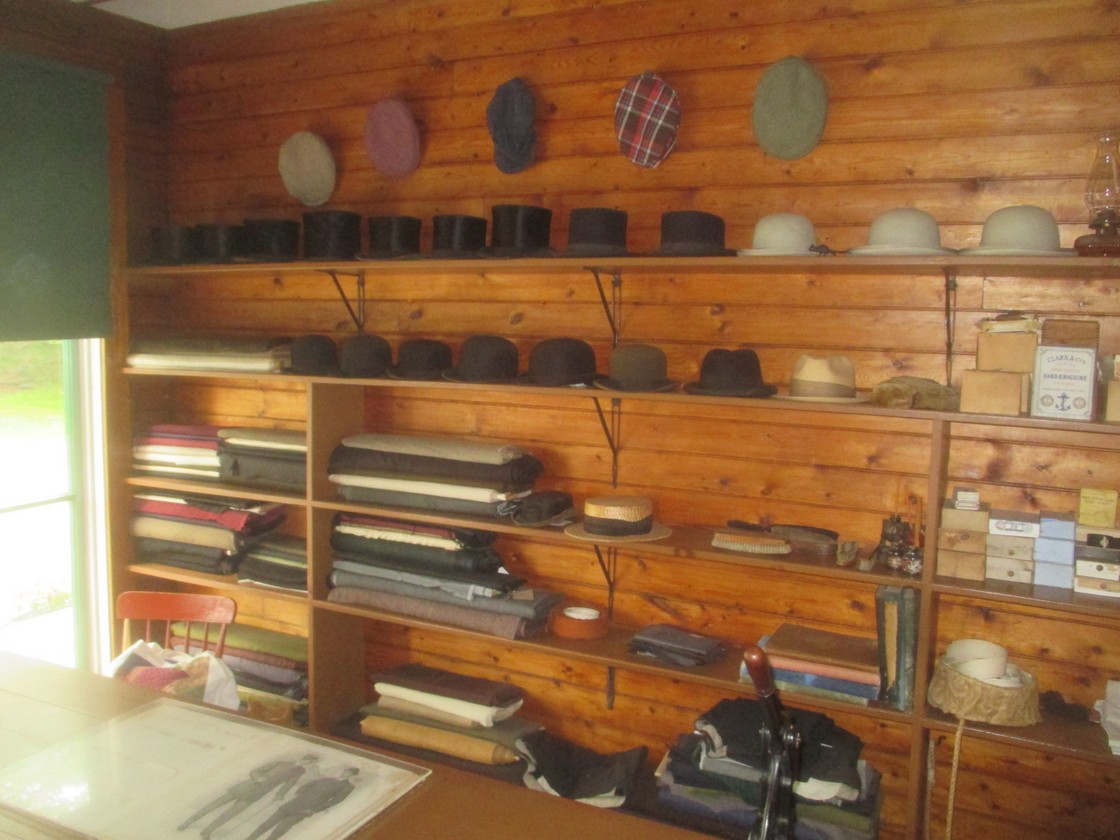
Our next stop was the rather smart emporium of “Donald McDonald & Son, Tailor”. As the name suggests Donald was the son of Scottish immigrants who had settled in Pictou County ( a short distance NW of here). At the age of 18 he moved to Sherbrooke, bought land and built his tailor’s shop with adjoining home for his wife and eventually eight children.
Like Joe McLane, the blacksmith we “met” in the previous post, Donald was a very well-respected man in the community and held posts of magistrate, Judge of Probate and Clerk of Sessions in the Presbyterian Church. The British settlement of this area seems to have been exclusively Scottish Non-comformist Protestants which I shall discuss shortly.
In 1910, when he was over 80 years old, disaster struck and the building burnt to the ground but he still managed to oversee the building of a new and better building (which you see here). This included a sweat shop for pressing and ironing.
The strain of the rebuilding must have been too much for him as he died the same year and the premises were taken over by his son “Geddie” who ran it for 33 years until his retirement in 1943 when he sold it to a couple called Cruickshank (another Scottish name).
The Cruickshanks did not run a tailors on the premises and used the shop for storage but they retained all the materials etc. that had been included in the purchase and these are the artefacts you see here today. I particularly liked the selection of hats.
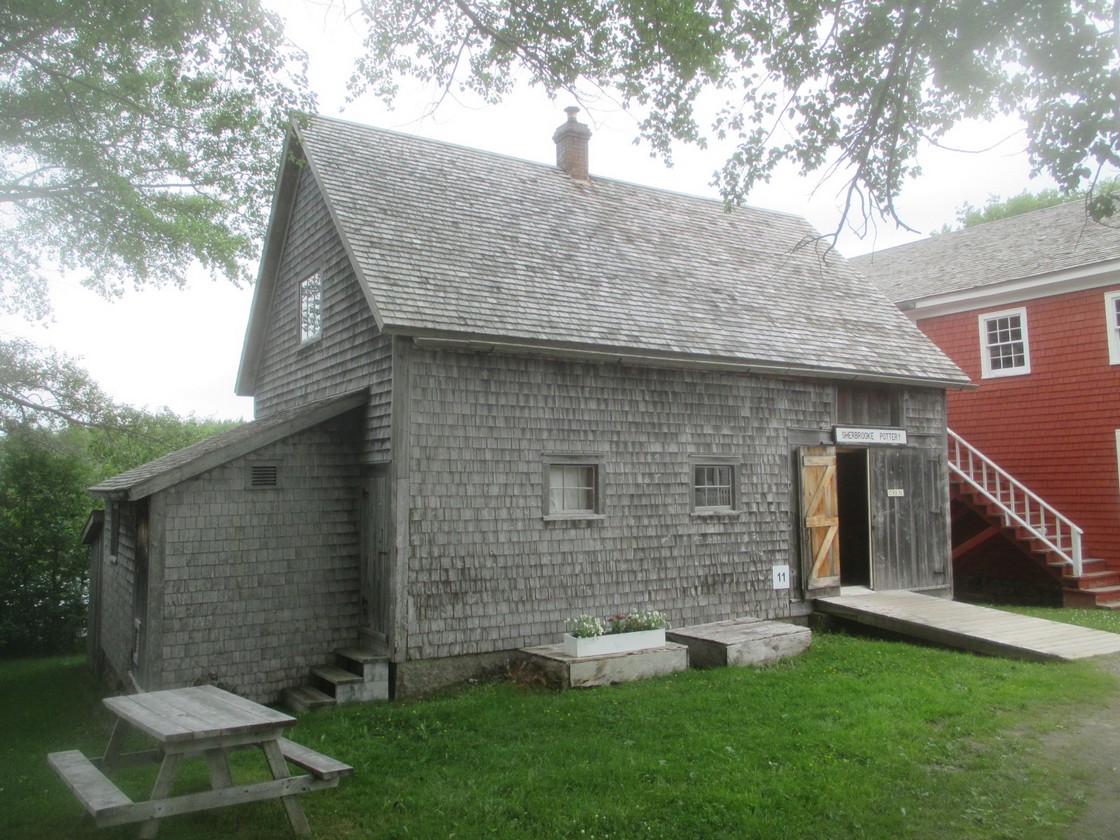
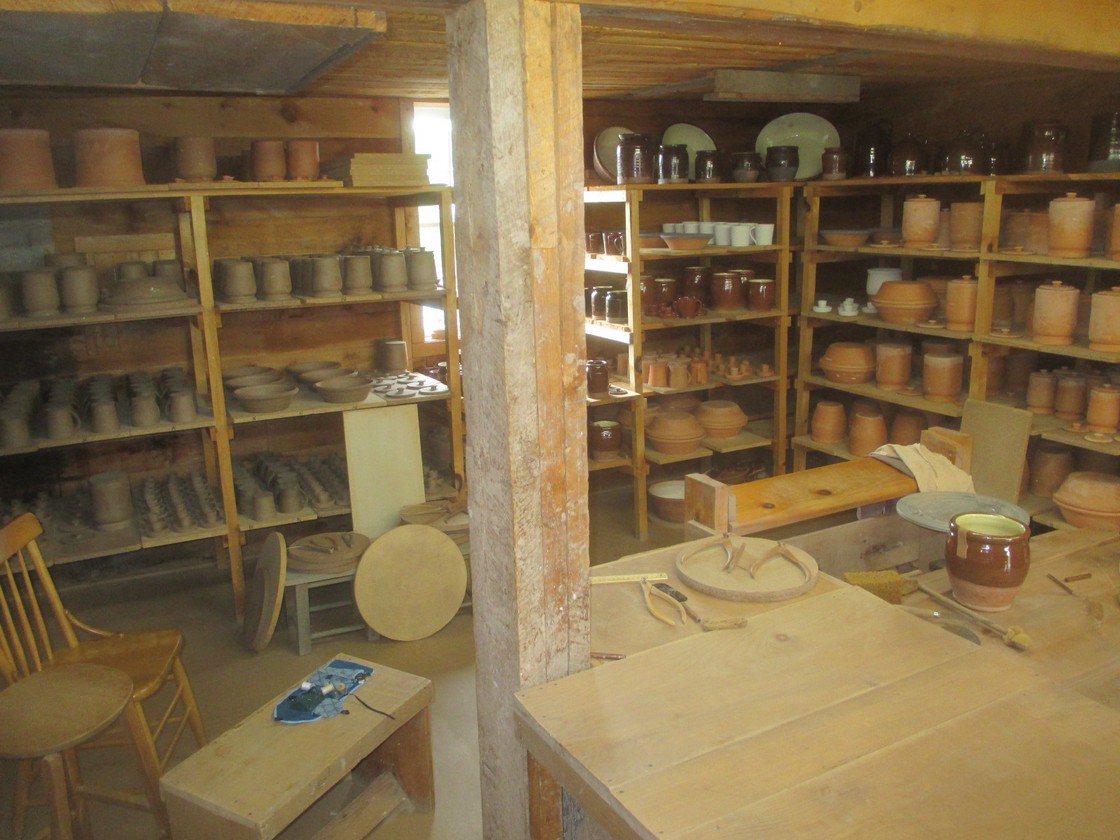

Next door to the Tailors is the potters, another wonderful place to look round. Once again it is a working pottery and reproduces both period and contemporary pieces. I think you’ll agree there is a rather fine selection which you can choose from in the giftshop.

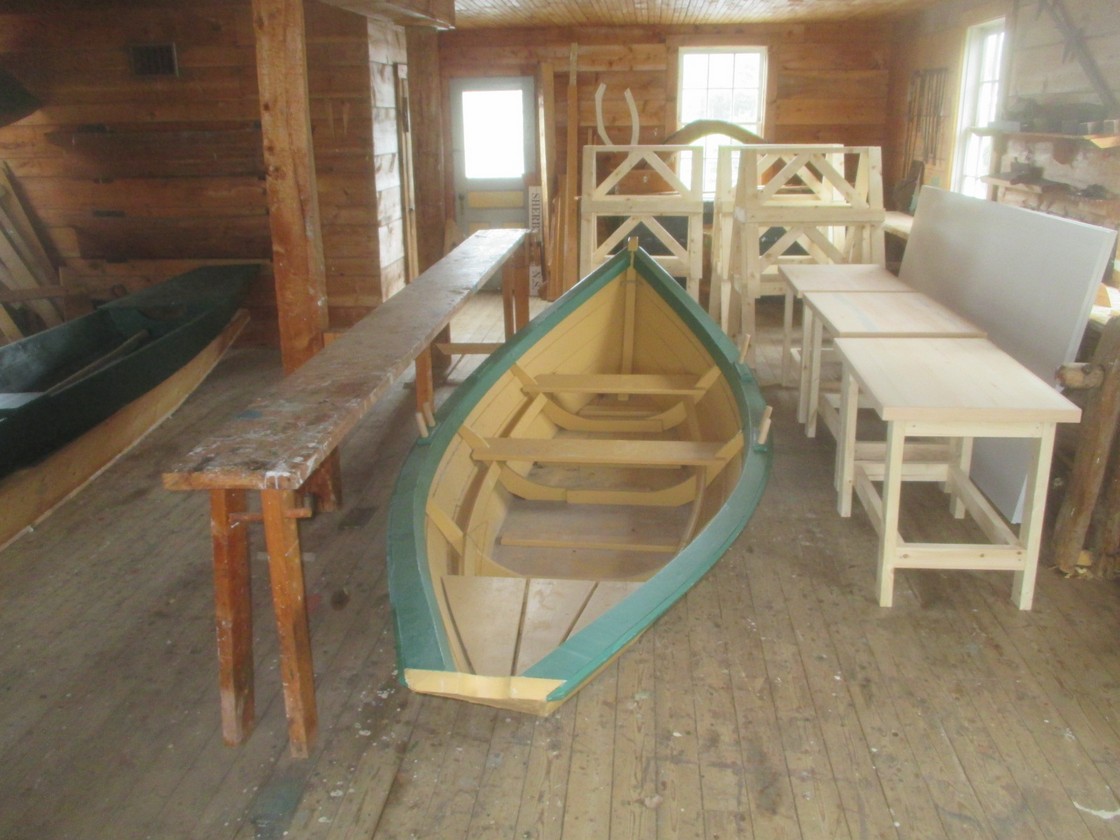
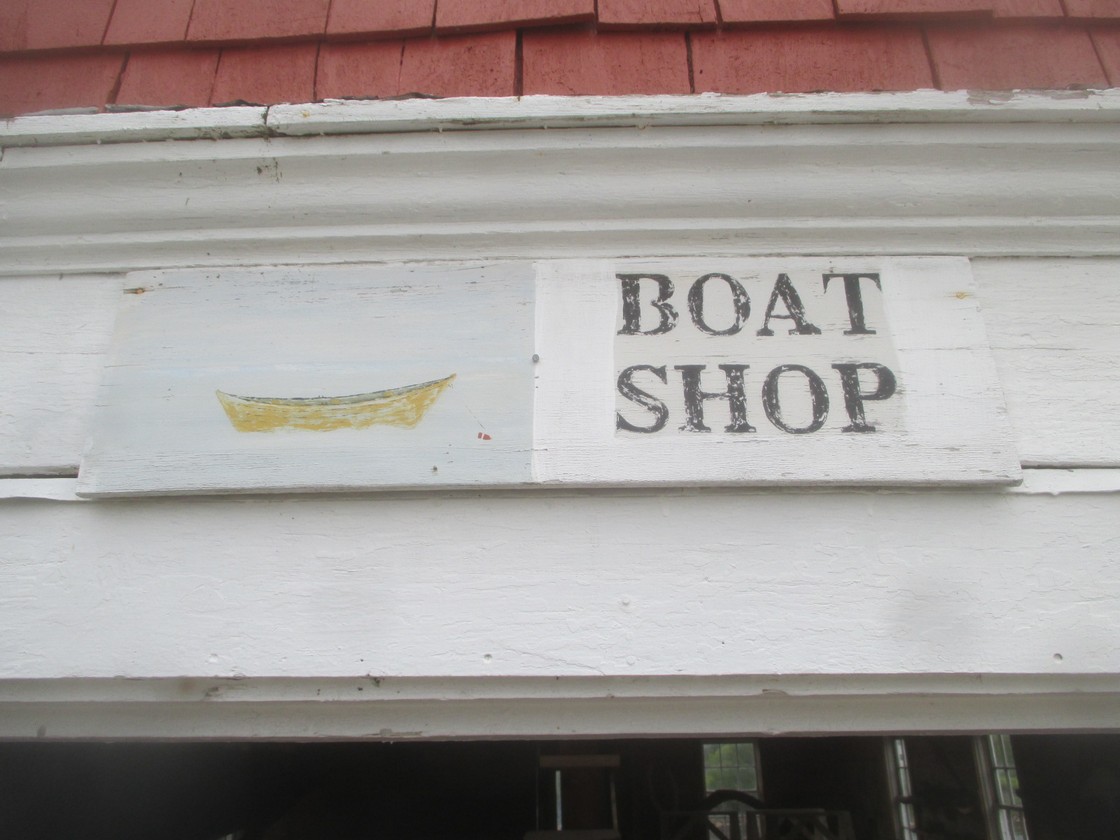
Let’s move on now to the Boat House. Being so close to the sea just down the navigable St. Mary’s river this is a perfectly logical business to have here. There wasn’t a boatbuilder present when we visited but there was an obvious work in progress and I read subsequently that they do actually produce craft for sale which, like the sawmill, the smith and the potter previously must contribute to the upkeep of the Village.
The history just doesn’t stop in Sherbrooke. The last three buildings were adjacent to one another and directly across the road from the Boat Shop is the Masonic Hall. Incidentally, don’t worry about wandering in the road as the Village is closed to traffic but do beware of penny-farthings (see previous post)!

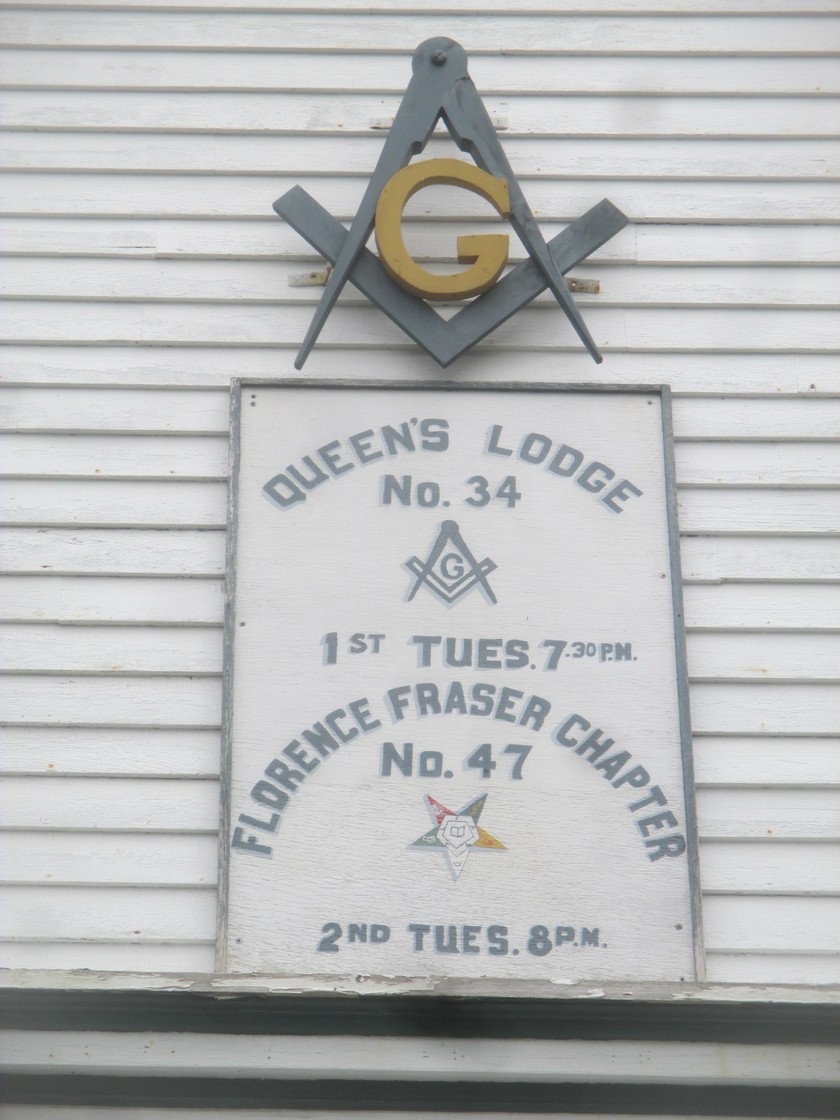
I have discussed the influence of Freemasonry in Nova Scotia several times in this series and here is another example. As we have seen, the post Acadian settlement of the Province is almost exclusively Scottish Protestant and this is exactly the sort of man who would be involved in that secret society or “society with secrets” as they prefer to refer to themselves.
In the interests of fair reporting, and I hope by now that regular readers will know that is how I like to write, I am not nor have I ever been a Freemason. I have many friends who are and are quite open about it and I have been “sounded out” once or twice but it is not for me. I have nothing against them and I know they do a lot of charitable work, it is just not my gig.
The Lodge, Queen’s #34, still meets upstairs here on the first Tuesday of the month which brings me to another point. I keep referring to Sherbrooke as a “living museum” which is true but it is rather more than that, it is more a museum within a living village. Within the pedestrian area there are 25 buildings open to the public which is a good number but there are actually about 80 buildings here in total and many of them are still private dwellings. It must be a great place to live.
Let me tell you about the Lodge and we are going to go round in circles a bit here as my rambles usually do. Lodge #34 dates to 1864 when Hon. Alexander Keith, Provincial Grand Master for Scotland in Nova Scotia (remember him, the brewery owner from Halifax?) granted dispensation for a Lodge to be established, originally designated #10. Alfred K. White, an English-born tinsmith was first Master.
At that time the Lodge did not meet here and it has had several homes over the years. The first meetings were held in the long-demolished Rock Hall, then moved to another building where it met until 1895 when it was decided to move again.
A plot of land opposite Joe McLane’s forge was purchased from his son Adam (another blacksmith) and a new Hall constructed where they remained until 1957 when they moved to the current building. The old structure was demolished in 1994.
Their current residence had originally been built in the 1920’s for the Odd Fellows (another fraternal organisation) and house a still very active Lodge as well as the Florence Fraser Chapter #47 of the Order of the Eastern Star.
The OES is like a female equivalent of the Freemasons for relatives of Freemasons, mostly based in North America. Men can join if they are Master Masons. It is all complicated so look it up if you’re interested as we still have plenty to see yet. I did warn you this was going to be a busy day.
Back across the road now for the next wonder and that is what it is, Cumminger Brothers’ General Store which was founded in the 1860′ by brothers John and Samuel who seemed to have had a finger in every pie. The also liked to keep it in the family as their other brothers Ebenezer and Isaac were also involved to a lesser extent.
On the empty lot opposite the Masonic Hall i.e. between here and the Boat Shop, they had a boat-building enterprise which built the largest boat, 680 tons, ever to navigate the St. Mary River. John was also a Master Mariner and had interests in gold and lumber.
When John died in 1892 his widow sold it to Campbell McDaniel for $1,000 CAD and, despite several changes of owner it traded until 1969 when the Restoration Society bought it and brought it back to it’s 1860’s glory and glorious it certainly is. Equally glorious is the adjacent building, Renova Cottage although it is rather grander than the name might suggest.
John Cumminger was a successful man, as we have seen, and had built himself a fine home even before he opened the store next door. In 1871 he sold it to his brother Samuel who resided there until 1905 when he, in turn, sold it to Dr. Lambert Densmore from Maitland, NS who had moved here with friends in the lumber business and set up a medical practice in his home.
As well as the fine collection of period furniture in the “home” portion of the building, his surgery has been faithfully recreated here, complete with examination couch, various instruments and even a very old wheelchair. You can see where he hand-pumped water and the stove he boiled it on the sterilise his instruments. Crude but effective I suppose.
The good Doctor also did house calls within a 20 mile radius utilising a horse buggy in summer and a sleigh in winter. If someone needed an operation they hung out a flag in the day or a lamp at night and the Doctor, literally “on his rounds” would stop and perform surgery in the home.
During World War One Dr. Densmore enlisted and won himself the Military Cross but he did not remain long in Sherbrooke on his return and moved his family to New Brunswick.


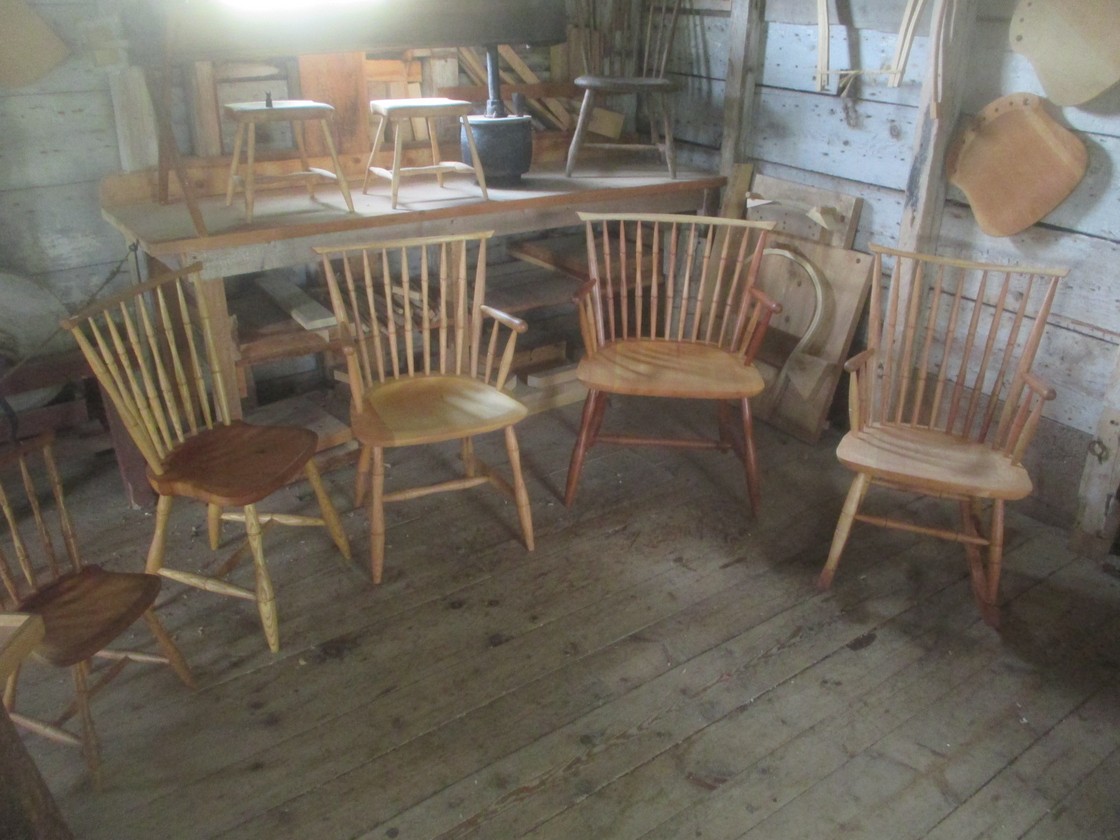
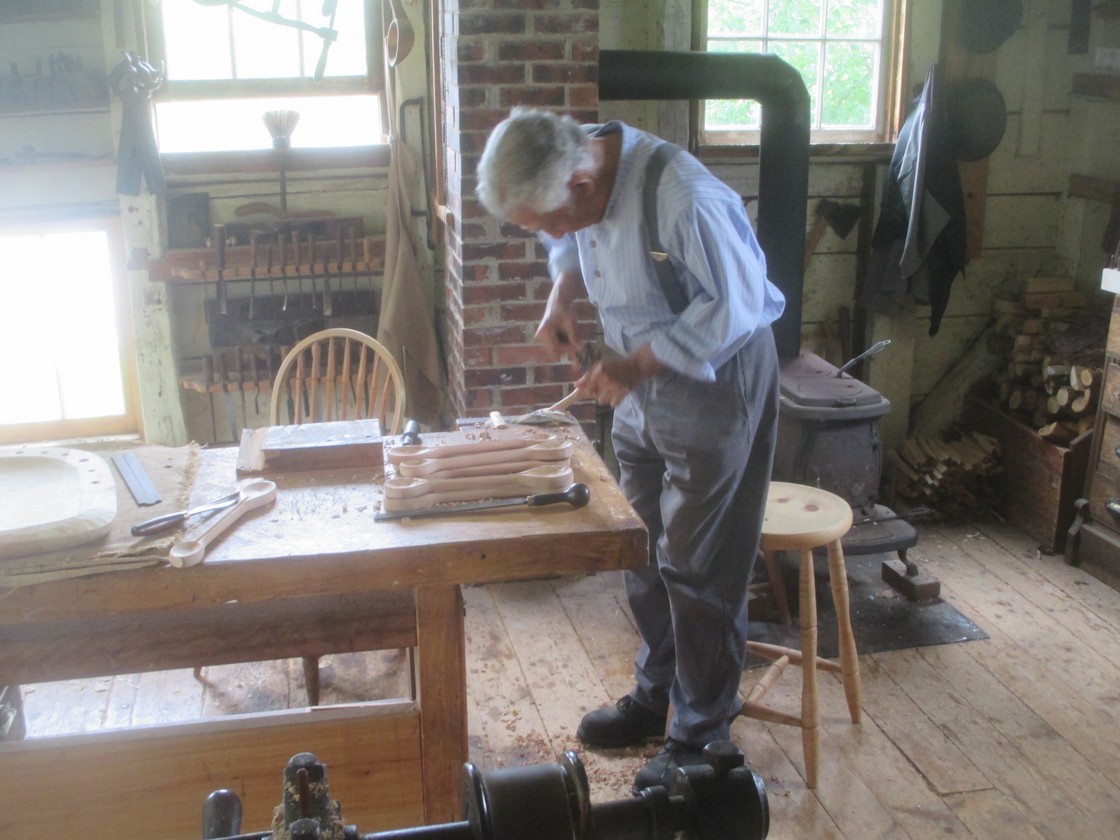
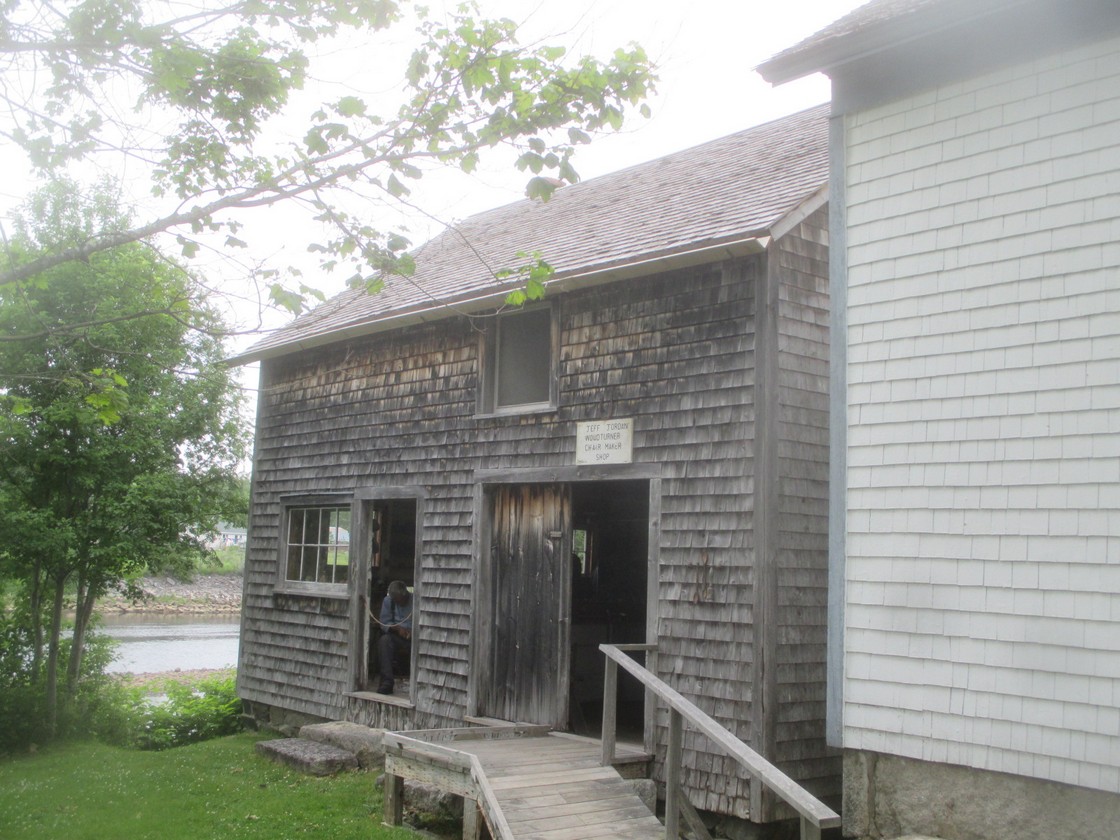
Again we did not have to go far, perhaps 10 yards to the next open building which was probably may favourite of the entire experience which would therefore make it my favourite building in my favourite historic site of the dozens we saw on this trip which means it really was special. It was the Woodturner Shop, it is simply magic and again I was amazed that on a high season afternoon Lynne and I were the only people there.
When we entered the workshop the gorgeous scent of fresh wood was everywhere and the old guy who was busily carving away to add to his already sizeable pile of wooden spoons looked up from his work and gave us a very friendly greeting. This was followed up by a lengthy conversation about all matters wood and indeed all matters the woodturner whose name I shamefully cannot remember. He told us he had emigrated to Canada many years before from the Caribbean and had been a woodturner here for some time.
You can see the man in action with this foot operated lathe here.
Like the guys in the sawmill earlier it wasn’t a pre-learned script that he was reciting, it was just like talking to a mate who happened to be turning or carving wood as he chatted. He showed us some examples of the fine furniture they make here and again this is not just a museum demonstration for the amusement of visitors but rather a viable commercial enterprise in addition to being a hugely interesting part of the whole experience.
Amongst many other commissions they replaced all the window frames in Province House, Halifax which we visited previously and made a range of display units for a niche market organic soap company when they gained a contract with the biggest supermarket chain in NS. Now it is time for a little quiz.
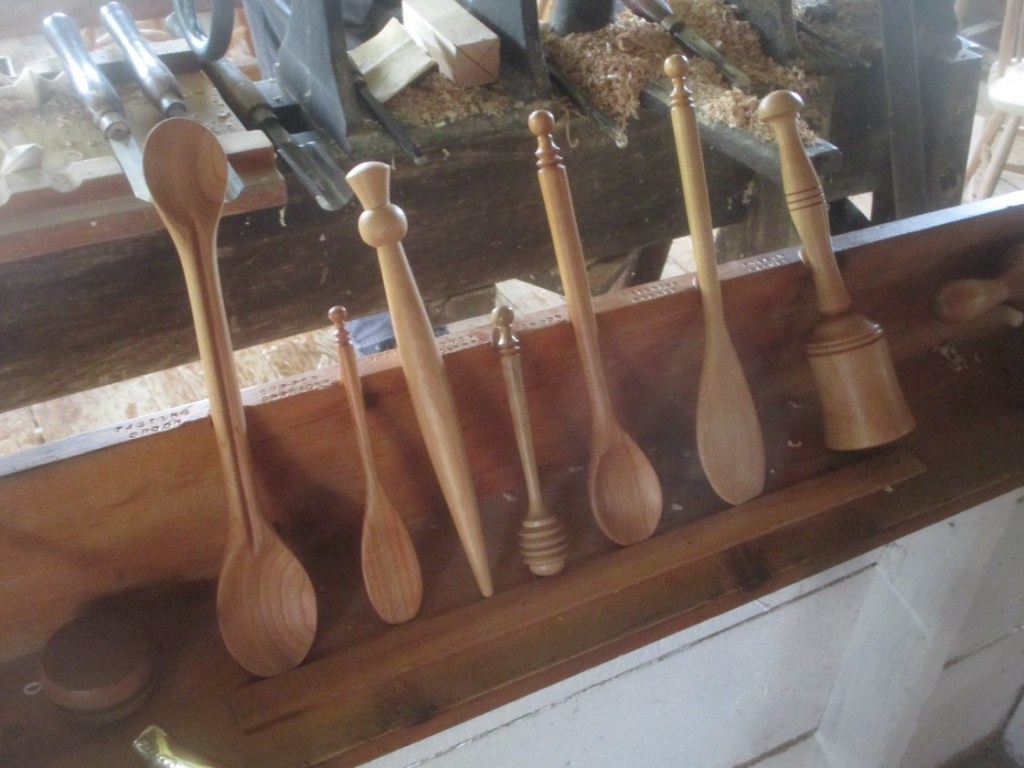
Take a look at the image above of some of the wonderful hand-made items from the workshop. You can see various spoons, a honey dripper and a pestle but do you know what the item third from the left is called and what it is used for?
OK, I’ll tell you, it is called a spirtle (various spellings) and is used predominantly for stirring porridge although it works for soups and stews as well. If you look closely there is a bit of a clue as the top of the implement is fashioned like a thistle which is obviously the emblem of Scotland, traditional home of porridge. Did you get it?
We are still not nearly done with Sherbrooke and again it was only a few steps to the next beautiful building, Greenwood Cottage.
If you remember when we were in Renova Cottage a while ago you will recall that John Cumminger sold it to his brother in 1871 and this is the reason why. Renova was lovely and very homely but John and his wife Sarah were on the up and this was the result.
Although the front door and etched windows are original much of the interior has been sensitively restored at various times and all the furniture is of the period but not of the building. It still looks very smart to me.
There are two staircases in the “Cottage” although how you can call a three bedroom house with quarters for the two maids and the kitchen in the basement and the gardener’s room in the attic is beyond me.
The staff used the back stairs and the owners and their guests the front. There was limited plumbing and the poor maids had to scurry up and down the back stairs with buckets of hot water when John or Sarah wanted a bath and then had to lug the dirty water back down afterwards! You can see the old tin bath in one of the images. Time to walk on.


The next building is much less grand and is slightly anachronistic in the 1867 setting of most of the village but it is very interesting , made the moreso by the delightful re-enactor you can see in the image. This is the Sherbrooke Telephone Exchange and obviously the “dog”, as telephones are called in Cockney rhyming slang (dog and bone = ‘phone), was not invented then.
This is dated to about the turn of the 20th century and is fascinating and yet again we had the building and the re-enactor all to ourselves. She regaled us with all sorts of interesting and often hilarious stories and we thoroughly enjoyed it so let’s move on to a building that is even grander than either of the “cottages” we have seen, this is the Courthouse.

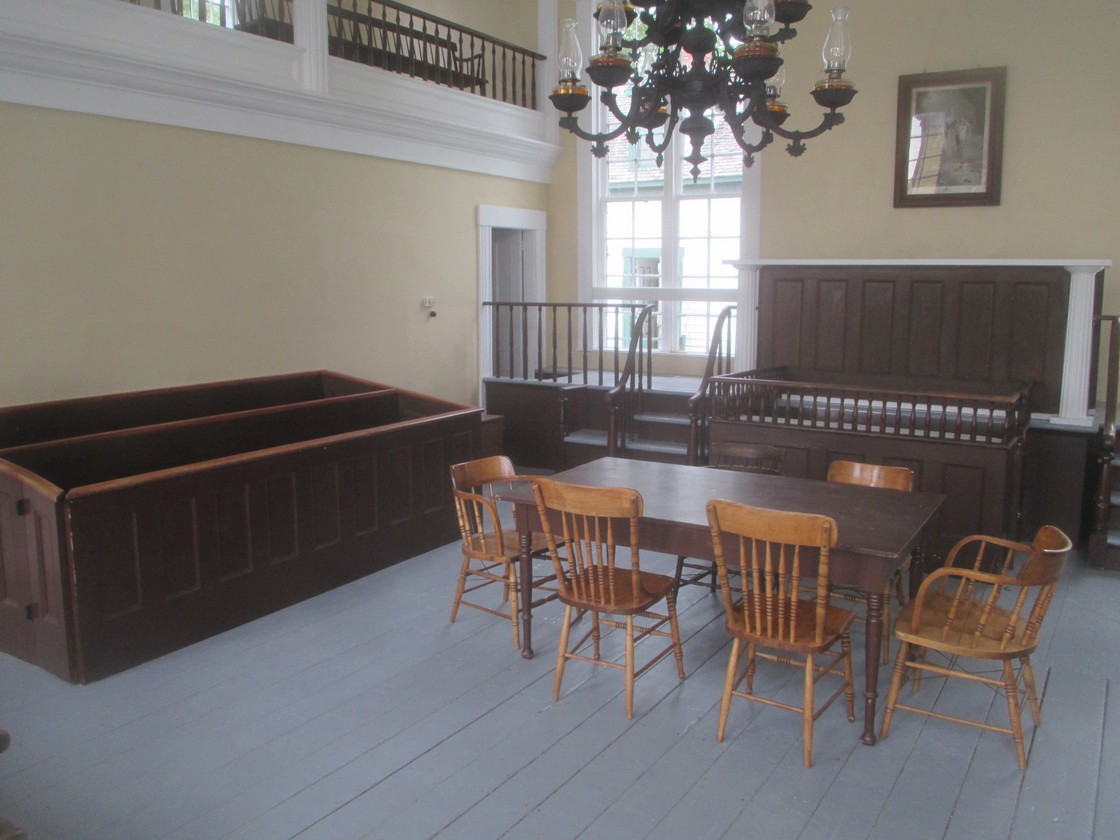
The Courthouse dates to 1858 and was built on land purchased from guess who? Yes, the Cumminger brothers, who else? They must have owned the whole damned village at one time.
As well as serving the needs of justice it was home to the Temperance Society until 1892 when they built their own hall and which we shall see shortly. In 1950 a vault was excavated and it was extended in the 1980′ to house the registry of Deeds.
The Courthouse functioned right up until the 21st century and in 2001 the Municipality entrusted it to the Restoration Commission who are responsible for the entire village. During restoration they needed some long benches and, in yet another little case of the circles that I so often speak of, they sourced them from Pier 21 in Halifax, remember that? The building is now used as a concert hall in the summer.
We still have more to see, so let’s step out, shall we? The next building is the oldest in Sherbrooke and is a lot more modest. It dates to 1840 and was the home / weavers shop of another one of the Cumminger clan, Henry. I did like the weaving loom here. It is amazing how self-sufficient they were in these new settlements, I suppose they had to be.


The next building, and we are getting near the end, I promise, is rather large but it needed to be for it is the Coach Barn, one of the more recent structures on the site, built in the first year of the 20th century by a man called Thomas Sears.
Apart from his horses and freight wagons, he also housed the freight here prior to transportation. He kept mail coaches in the barn and ran the Sherbrooke – Antigonish mail service from 1892 – 1931. I am sure he must have updated to the internal combustion engine by then.
The next thing we discovered is not old per se although the sentiment regrettably is as old as time. Here is what I wrote.
Another sad reminder.


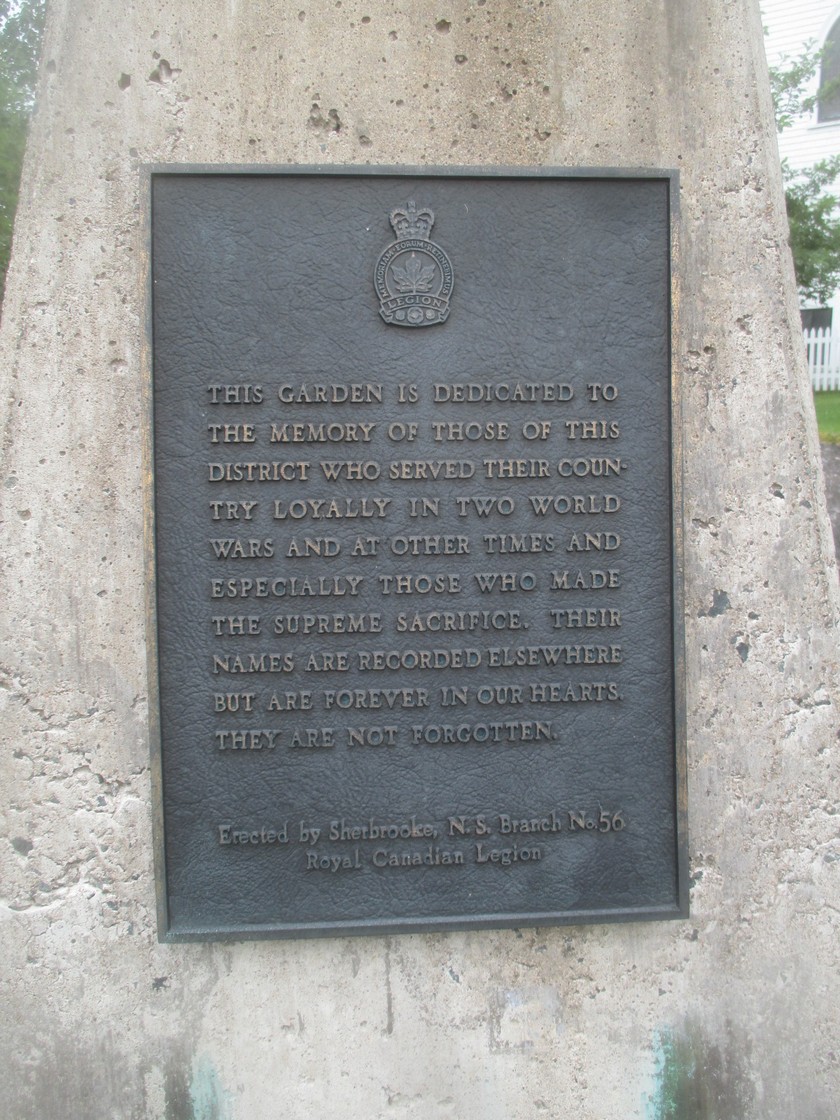
“Anyone who has read more than a few of my posts will know that I have an interest in military history including war graves and memorials so it will come as little surpise that when I saw the structure pictured I had to go and investigate.
It is a simple enough memorial, even leaning slightly and it is dedicated to the members of the 4th Battalion Nova Scotia militia (raised in 1834), the Sherbrooke Guard (raised in 1862) and other militia units of the Sherbrooke area in the 19th century.
Another plaque remembers those who served in two World Wars and other conflicts, especially those who made the supreme sacrifice and further dedicates the garden to them stating that “they are not forgotten”.
I would have hardly applied the term garden to the area surrounding the monument as it is not laid out formally in the sense normally applied to the word. However, it is well enough tended and obviously looked after albeit merely a grassy area. Then I got to thinking that battlefields are generally not aesthetically pleasing and so it was probably appropriate.
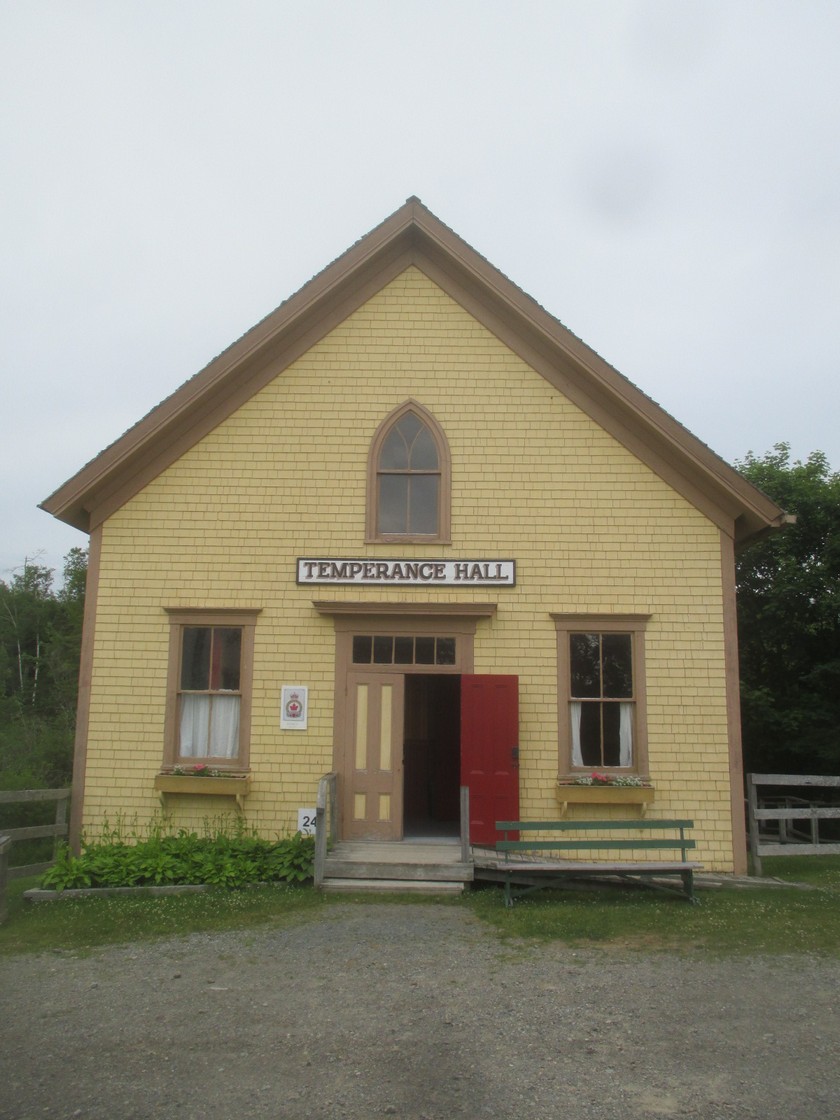
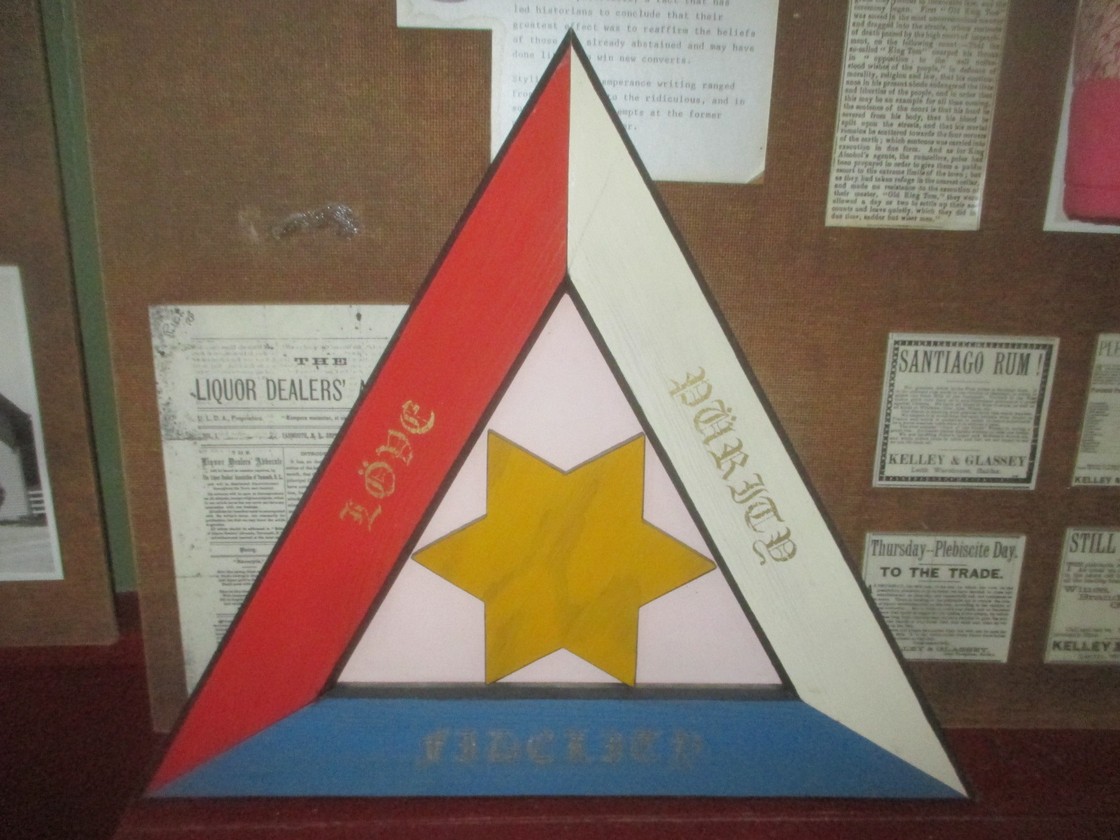
The memorial is near the Temperance Hall which I alluded to earlier. It was built by the Temperance Society in 1892 although the good folk of Sherbrooke must have acquired a liking for the demon drink as the Society fell out of favour and by 1905 the building was re-purposed as an elementary school, a function it performed until 1953.
After it ceased to be used as a school it was taken over by the Canadian Legion as the Legion Hall which it remains to this day. As befits a former Temperance Hall, the Legion is one of the few “dry” branches in Canada and I did mention in the previous post how difficult it is to get a drink in Sherbrooke. It must be something to do with the Scottish Presbyterian influence, or maybe not.


The very last place we visited in the Village, you’ll probably be glad to know, was the schoolhouse which was built in 1867 and is fairly spartan as schoolrooms tended to be in those days.
I think that by now we had done reasonable justice to Sherbrooke although even with the time we spent there we did not see absolutely everything. As I mentioned before, the website mentions a suggested two hours to look round here, two days more like! Time to get back on the road as it was now almost 1700 but that still gave us about five hours of daylight so no problem there.
We carried on along Trunk 7 which would have taken us due North to Antigonish had we followed it but we wanted to continue along the coast as we had been doing all along so we planned to turn off onto the minor 211 which followed the coast fairly closely but before that we had a quick pit-stop.
I wish we had had more time.



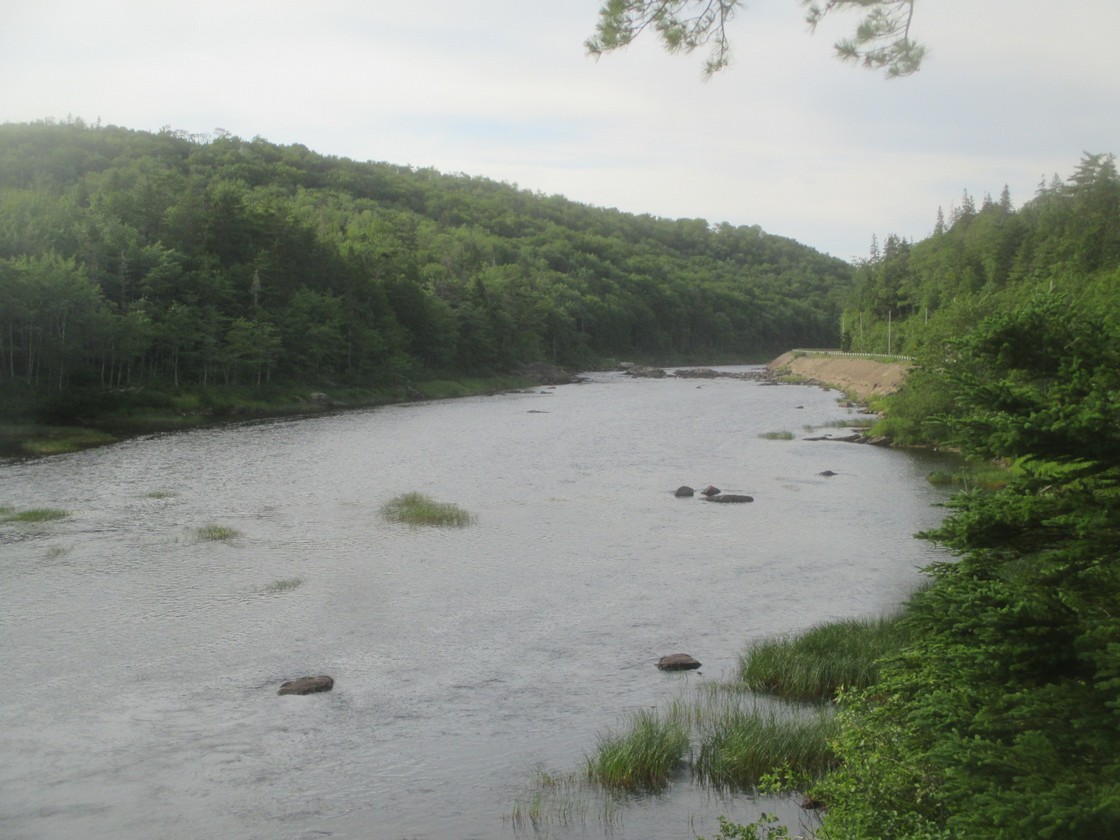
“Not too far out of Sherbrooke we were heading along and without wishing to be indelicate, I needed to use the toilet, washroom, bathroom, restroom or whatever you call it where you are.
Spotting an official Department of Natural Resources picnic area we stopped and I availed myself of the facilities which the Provincial Government and relevant Department seem to maintain to a consistently high standard.
Wandering back to the van (watch the road although there was little traffic on it) I saw that the picnic site was situated, as you might imagine, in a completely delightful spot and I did have to take a minute or two to capture a few images which you can see here.
Even in the height of the tourist season (early July) it was completely deserted which I found a little odd. Certainly it is at the side of a road but, as I mentioned, there was little traffic and it really was a most delightful spot. I just wish we had had time to stop and have a bite to eat there but time was pressing and the road goes on forever as they say and so we got back on it.
If you are in the Sherbrooke area then this would be a lovely place to pack up a nice lunch and spend the day at.
We drove for about an hour and then things went a bit awry. Here is what happened.
Pick your times.

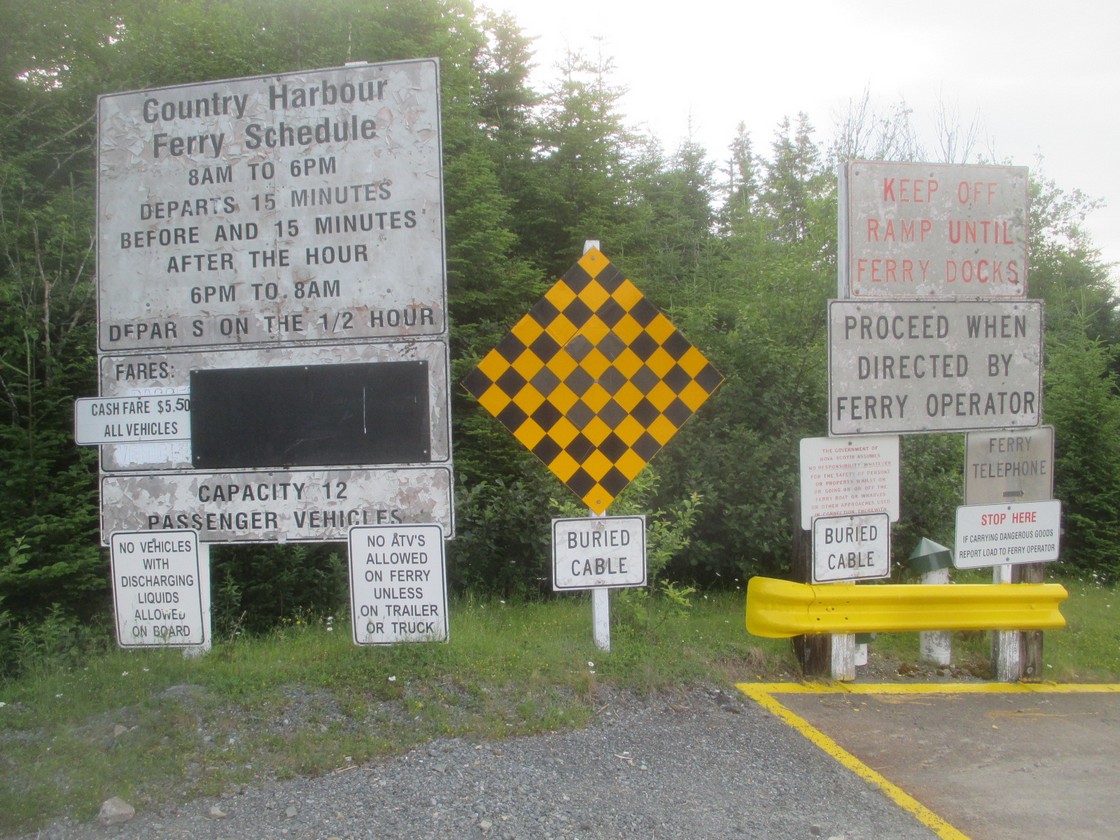


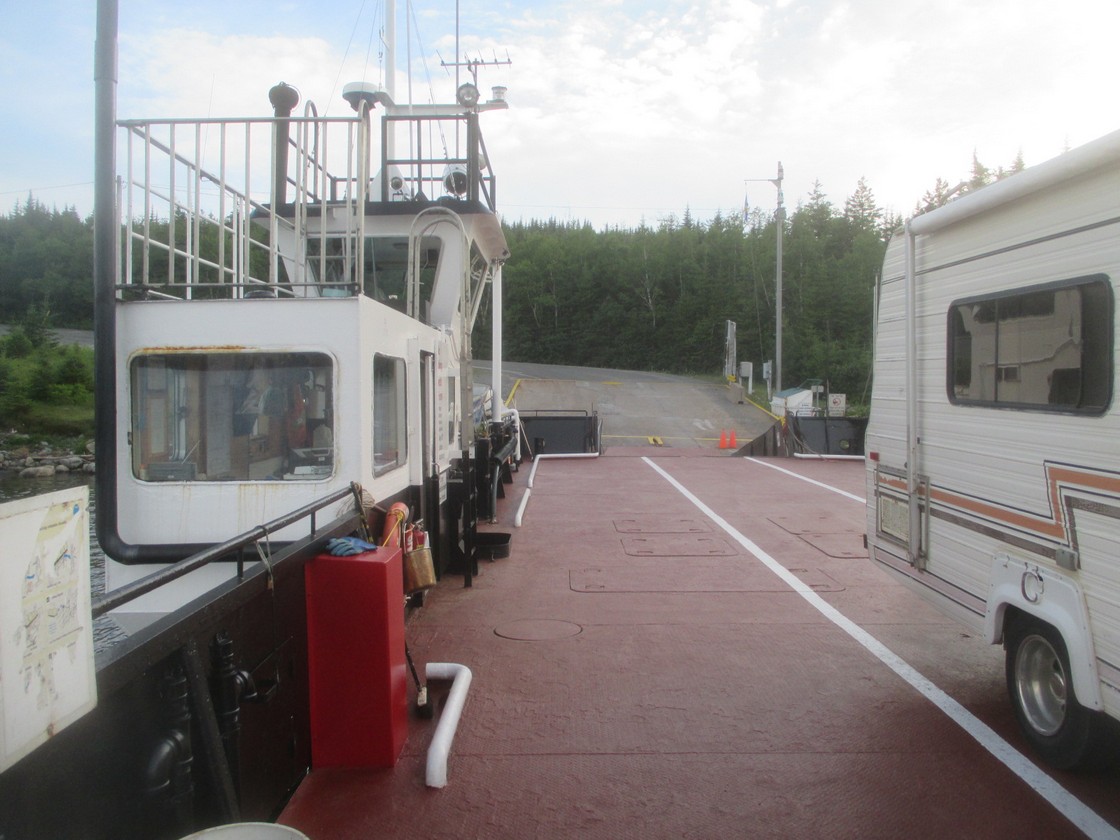
“We were travelling basically South and East from Sherbrooke trying to put a few miles behind us after having dawdled rather too long round the wonderful Sherbrooke Village and with the general idea of reaching Canso before nightfall.
All was going well as we travelled along Highway 211, a very pleasant road with little traffic and the ancient campervan (RV) we were in seemed to be holding up nicely and not making any of the strange noises she was prone to making. Everything was great until the road decided it didn’t want to be a road any more and was going to be a body of water instead. Hmm.
The sign very clearly announced that we were at the Country Harbour Ferry. Certainly, it was my own fault for not checking the map properly, I was being lazy and following road-signs so nobody else to blame. We had just seen a ferry departing from our side and a quick check on the informative sign let me know the next ferry was in almost and hour and this gives rise to the title of this piece.
From 0800 to 1800 they run every 30 minutes and from 1800 to 0800 only once an hour. Well, no use crying over spilt milk and so I prepared a small snack for Lynne and myself, made her a coffee from the Thermos and took the opportunity to avail myself of a can of cider (I wasn’t driving, I hasten to add) and we sat and waited.
Now, I know from long experience on the road that many travellers would see this as a huge inconvenience and rant and rave but what can you do? Might as well just enjoy yourself and let things take their course which is what we did.
I am not very good at sitting for long periods anywhere and so I went for a wander about. There is absolutely nothing to see at the Southwestern side but the scenery is pleasant enough and it was certainly very peaceful, just lovely Nova Scotian countryside.
I did utilise the free ‘phone to the office on the far side and enquired if there was an alternative road route but was told that it involved a fairly long drive and we would be as quick to wait for the ferry, so we did. I even took the opportunity to clean the windows on the ‘van, I had nothing else to do.
Obviously, the locals know when to turn up as the single other vehicle on the boat appeared about five minutes from departure time.
The vessel is a cable ferry so the traveller need have no fear about being swept out to sea! There is a small crew, I saw two namely the captain / steersman or whatever and the deckhand who was charming when taking our fare which is a standard $5:50 for a vehicle irrespective of the number of passengers (2014 price).
The crossing is very quick but somehow exhilarating and I really enjoyed it, it was well worth the wait. If you decide to take the 211 and I recommend you do as it is a lovely road, then be sure to factor in some time for this ferry if you are on a tight schedule. If you are just rambling about then it is another delightful little diversion on the way.
I even had a crack at a little videography which you can see here.
We made it to Canso without further mishap or rather we made it to just short of Canso and the very pleasant Sea Breeze Campground which is about three miles West of the town itself. It is very pleasant but, as this had already become a bit of a magnum opus, I’ll tell you about it in the next post.
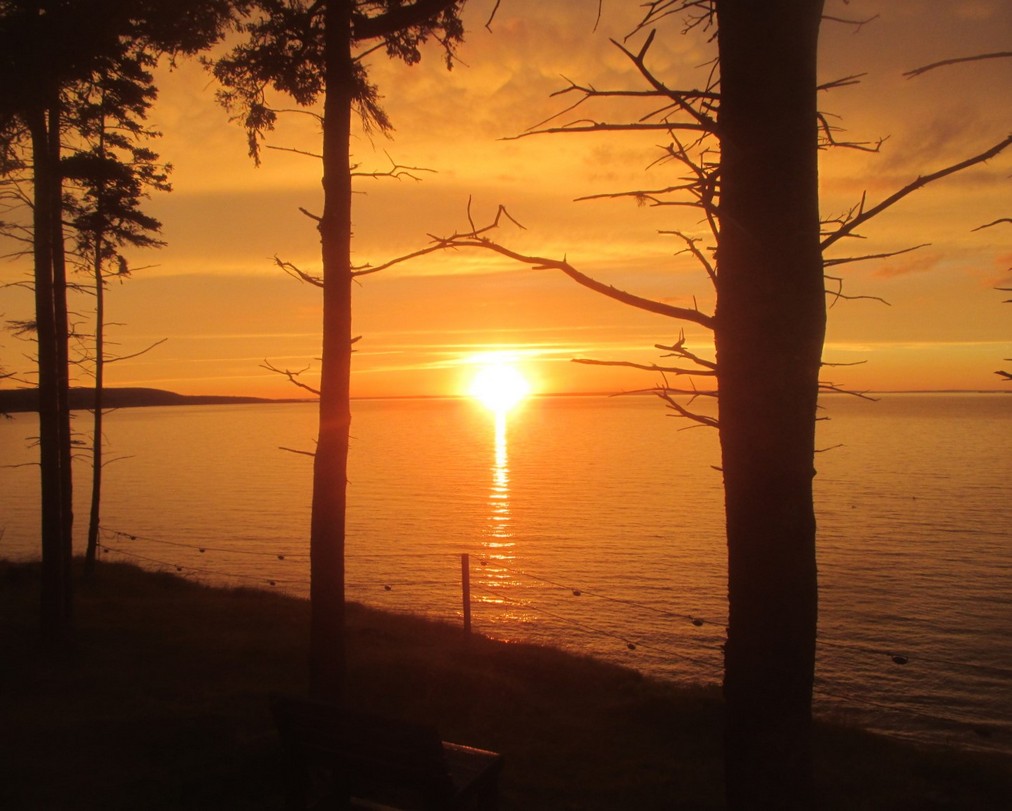

What I will tell you about is the fact that we arrived, checked in and hooked up just about in time for another magnificent sunset. Those Nova Scotians really do know how to do a good sunset and no mistake.

What was considerably less impressive was supper of fish with a lemon butter and caper sauce, peas and oven fried chips (fries) but I never said I did haute cuisine.
Well, that was a bit of a day out, wasn’t it? I do hope you enjoyed it. In the next post we’ll have a look round Canso and then get back on the road so if you want to see what we discover and where we end up then stay tuned and spread the word.


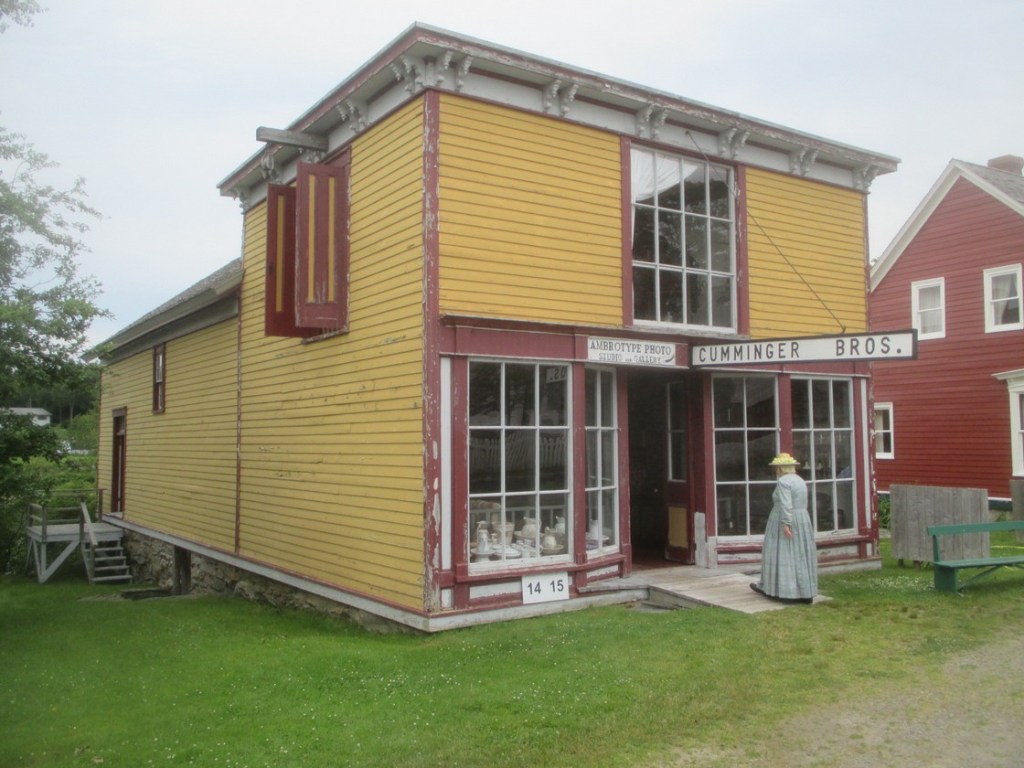
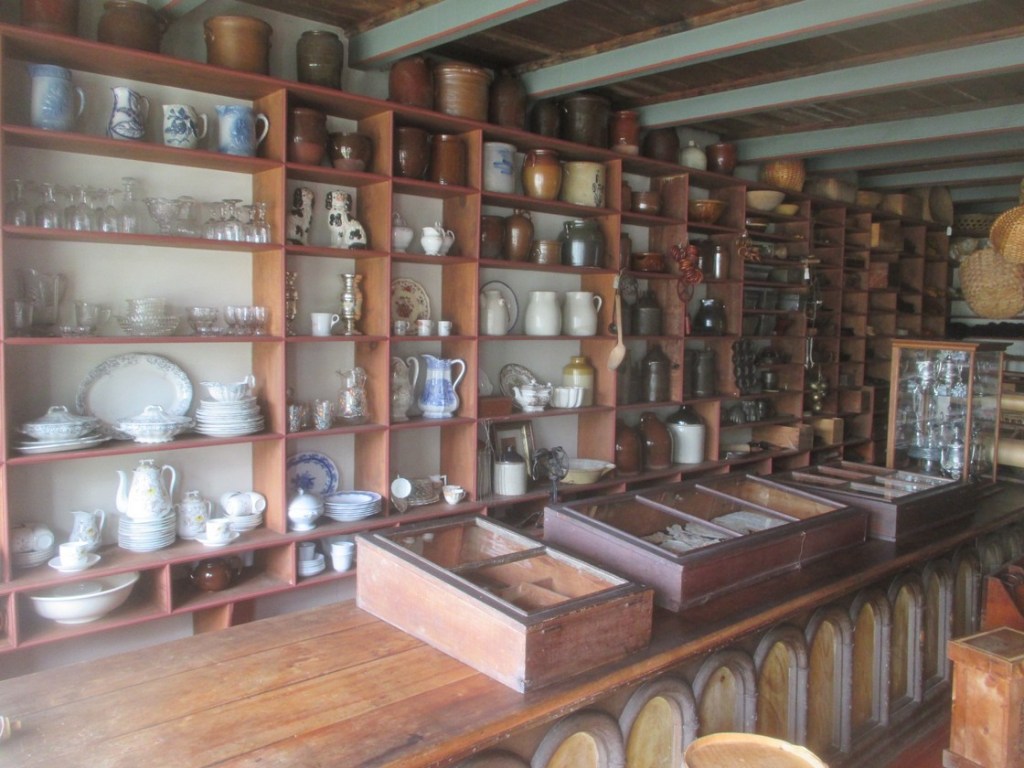

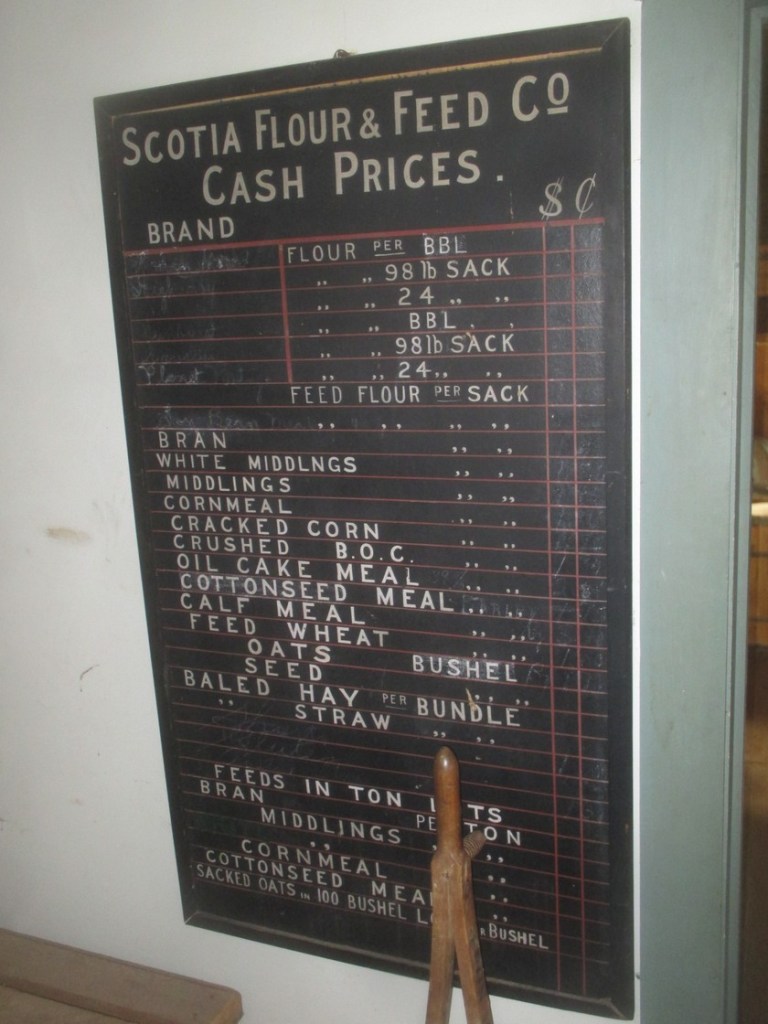
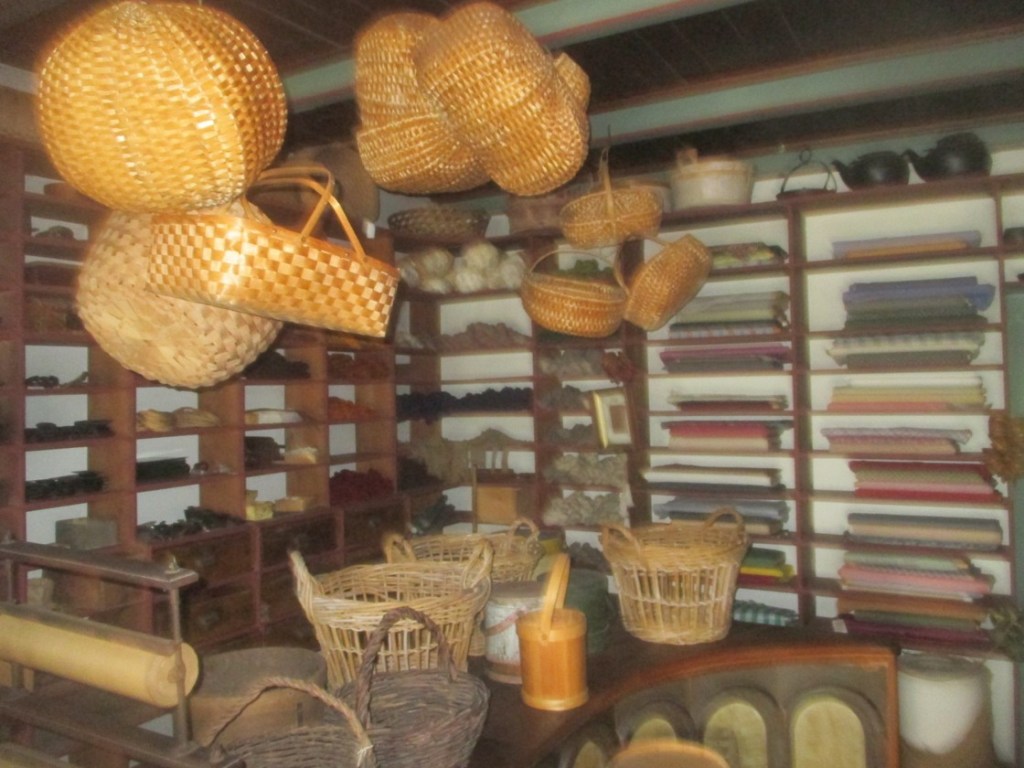
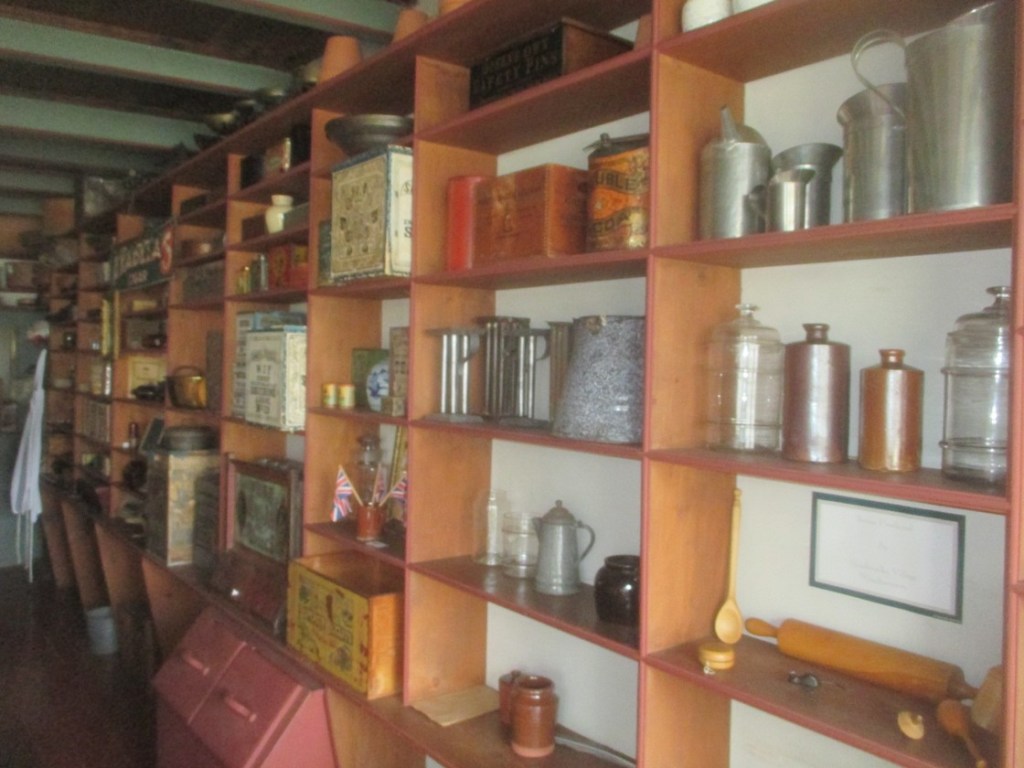
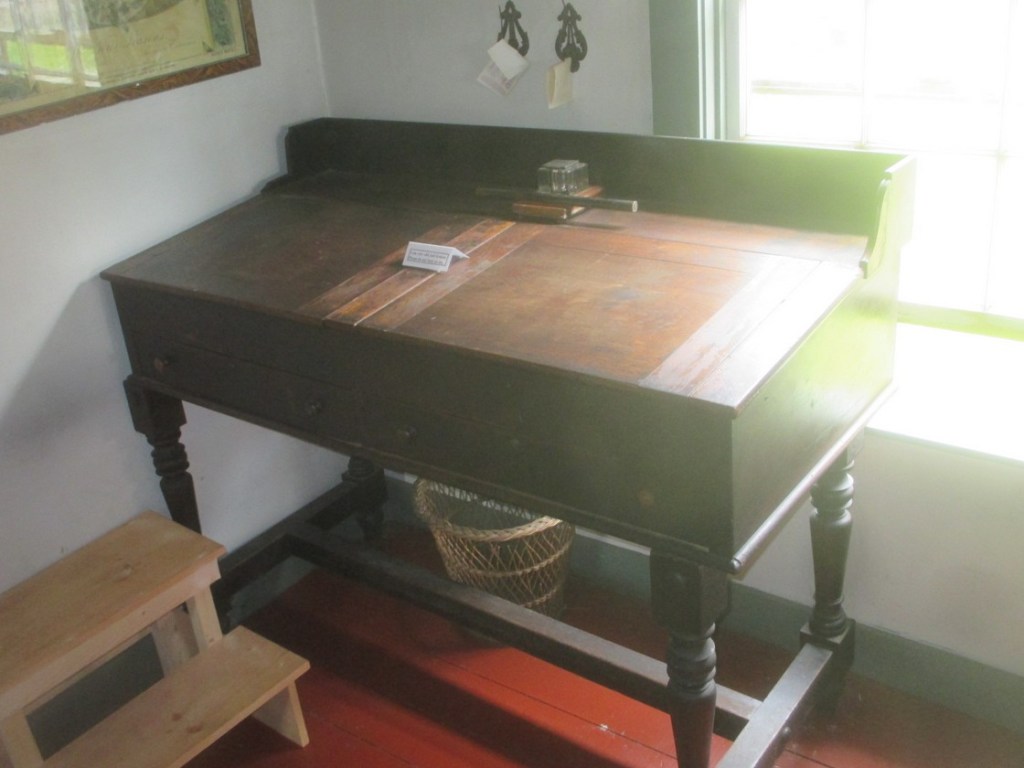

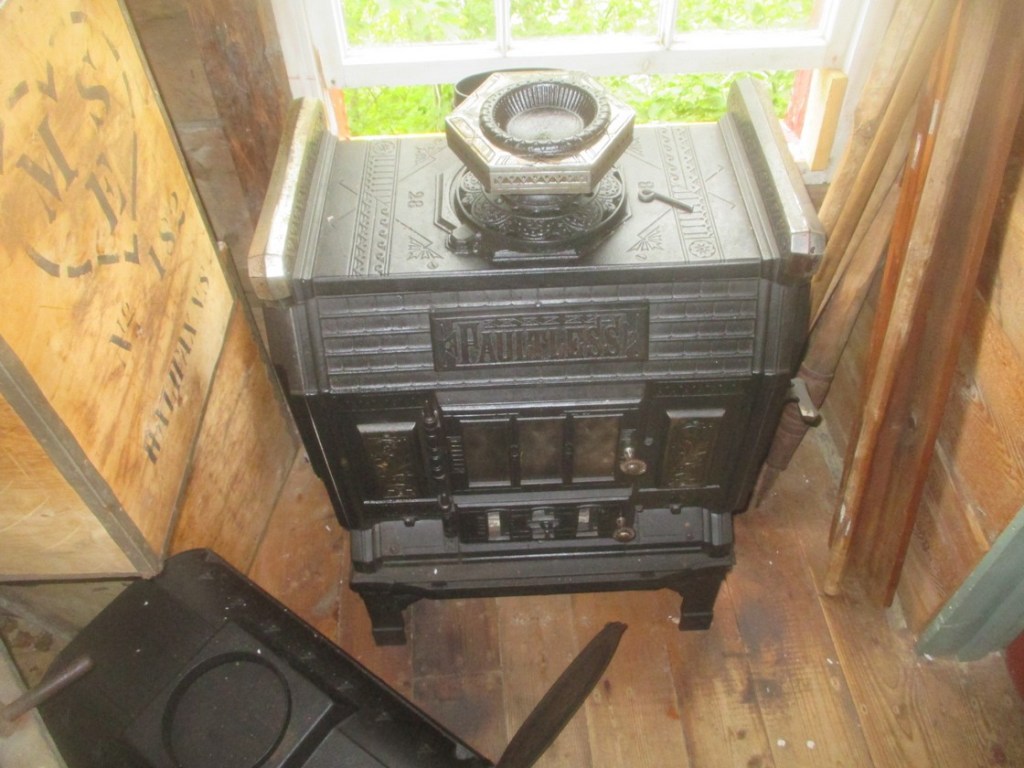


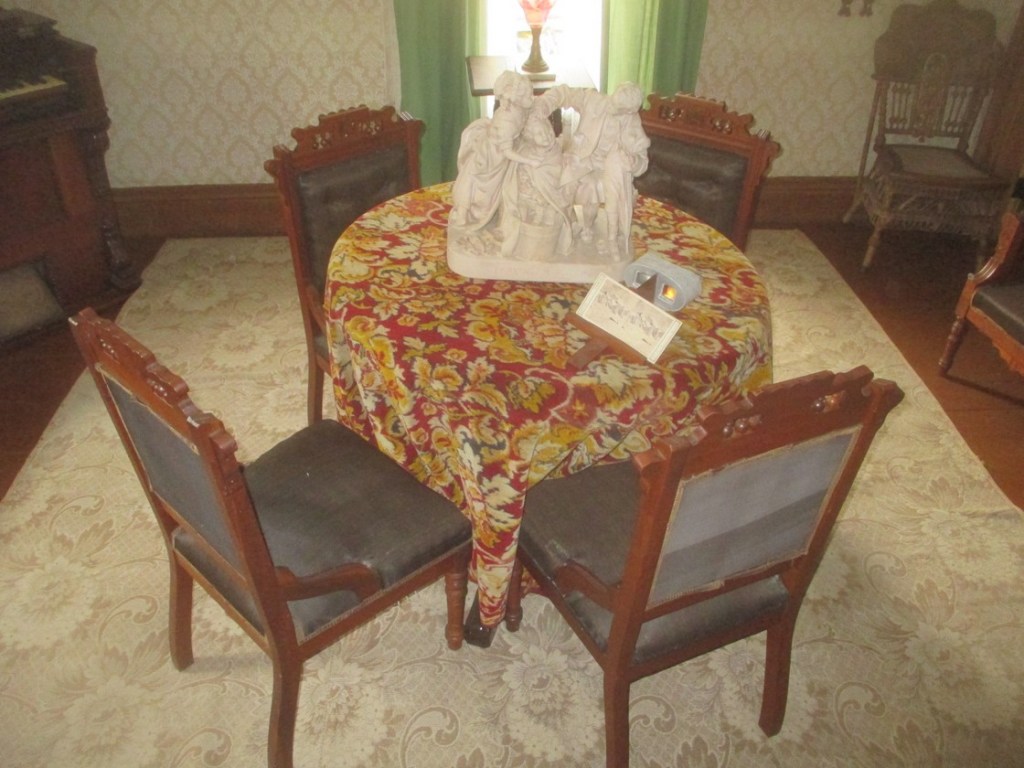
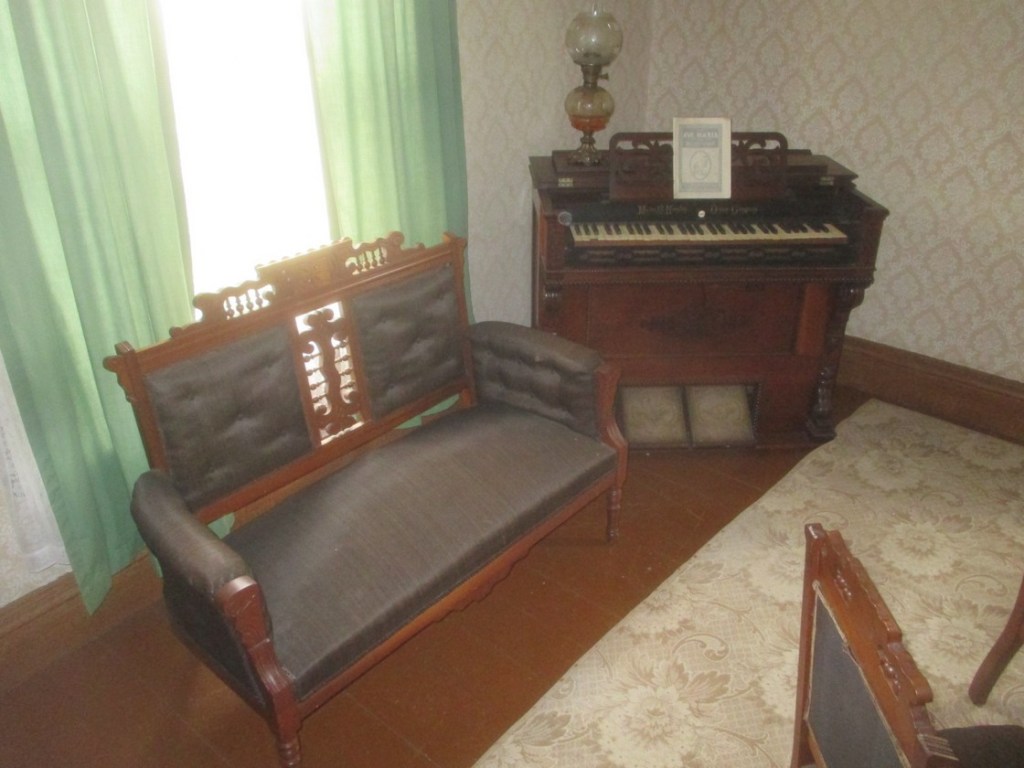
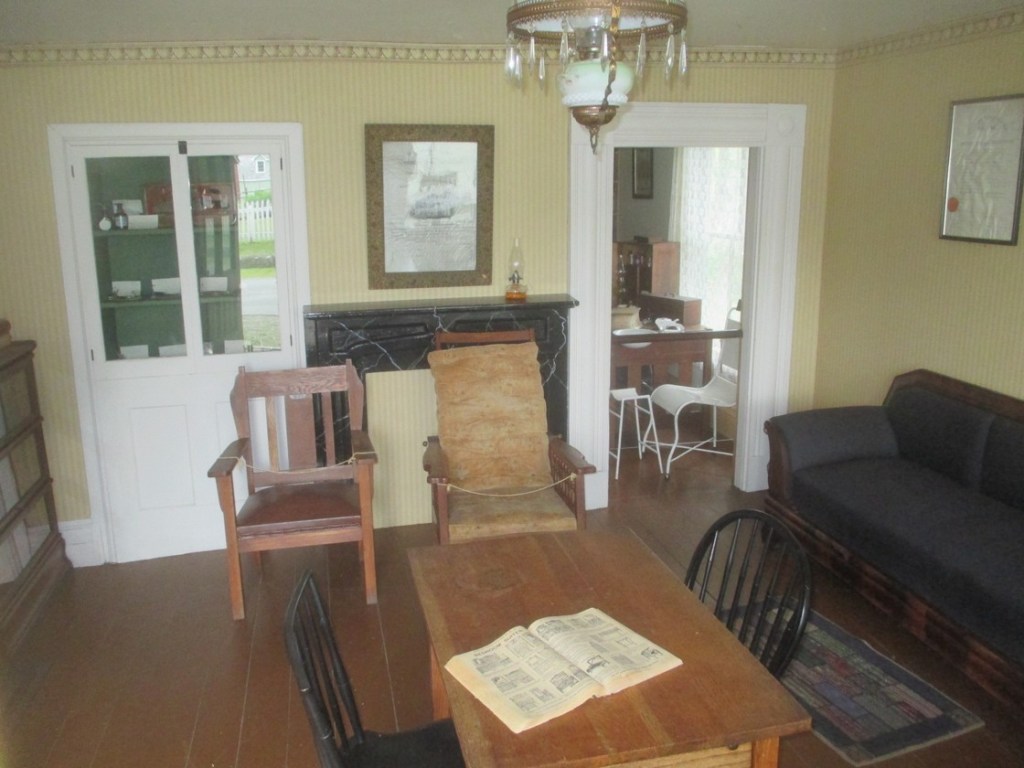

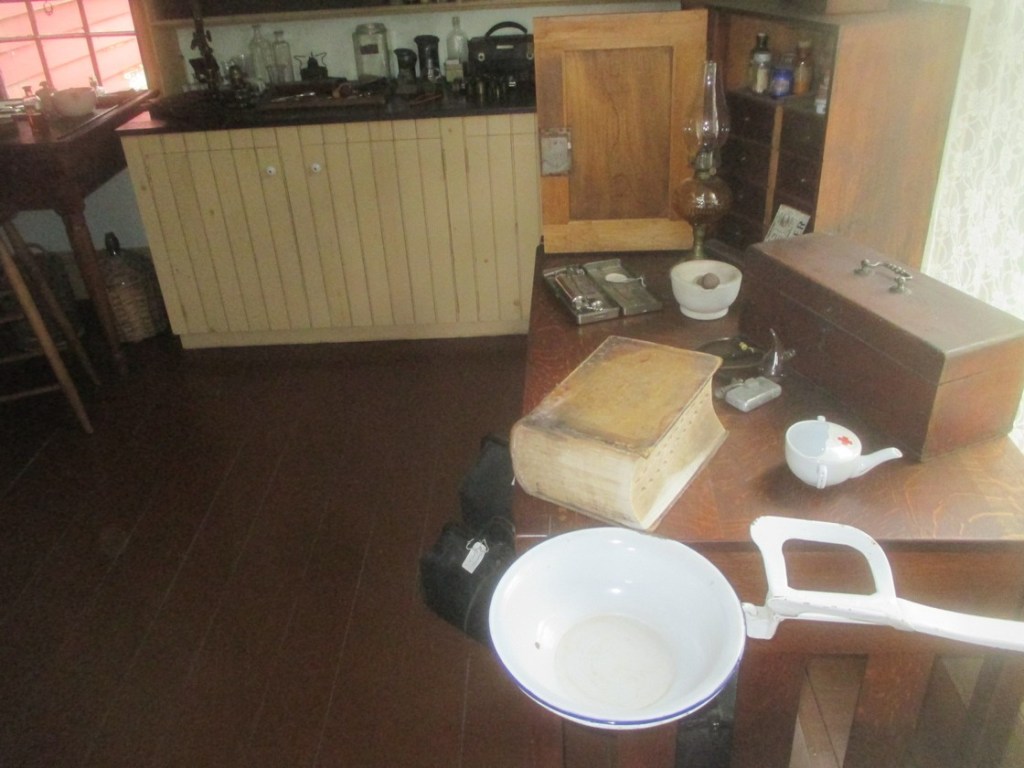

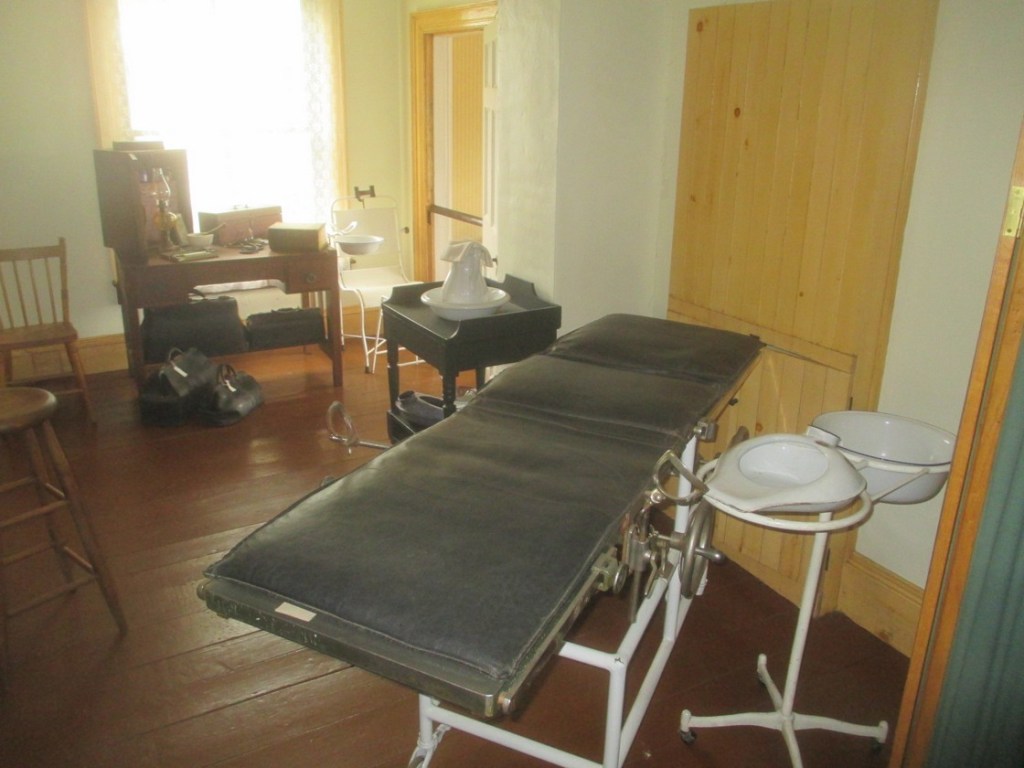
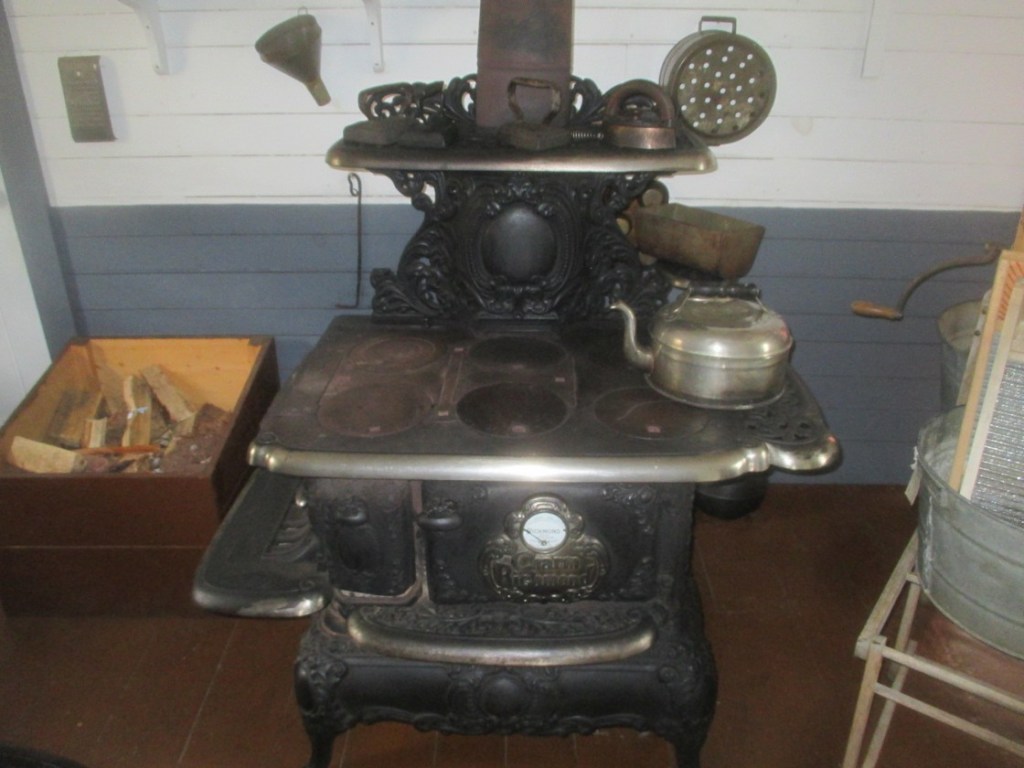
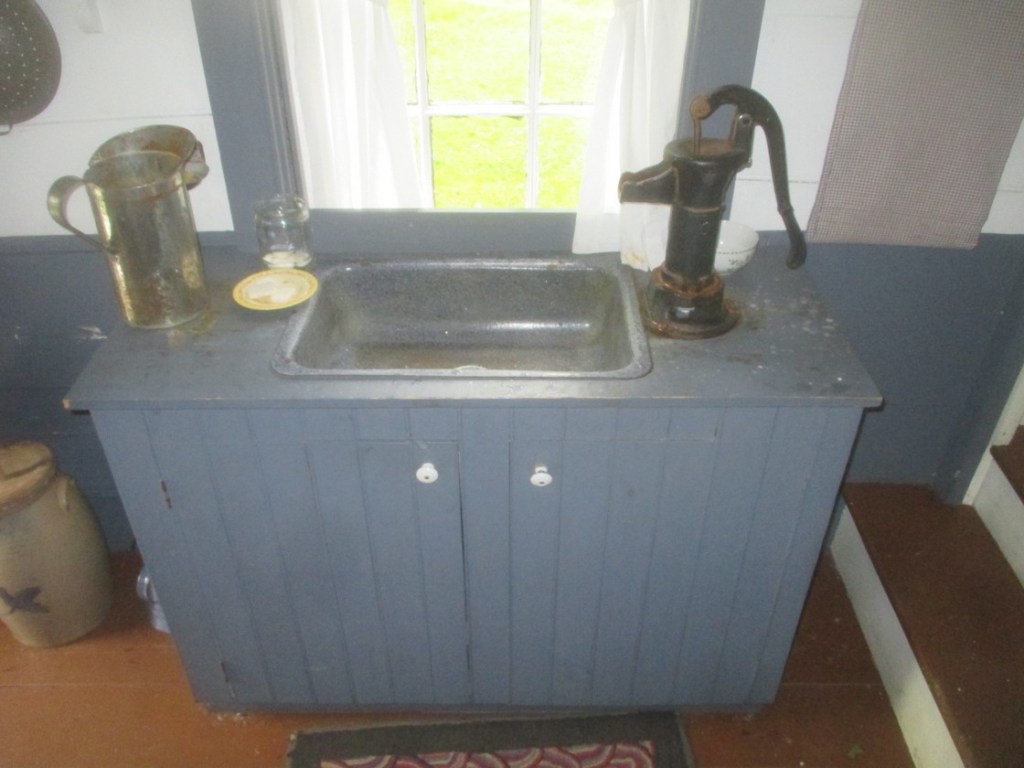





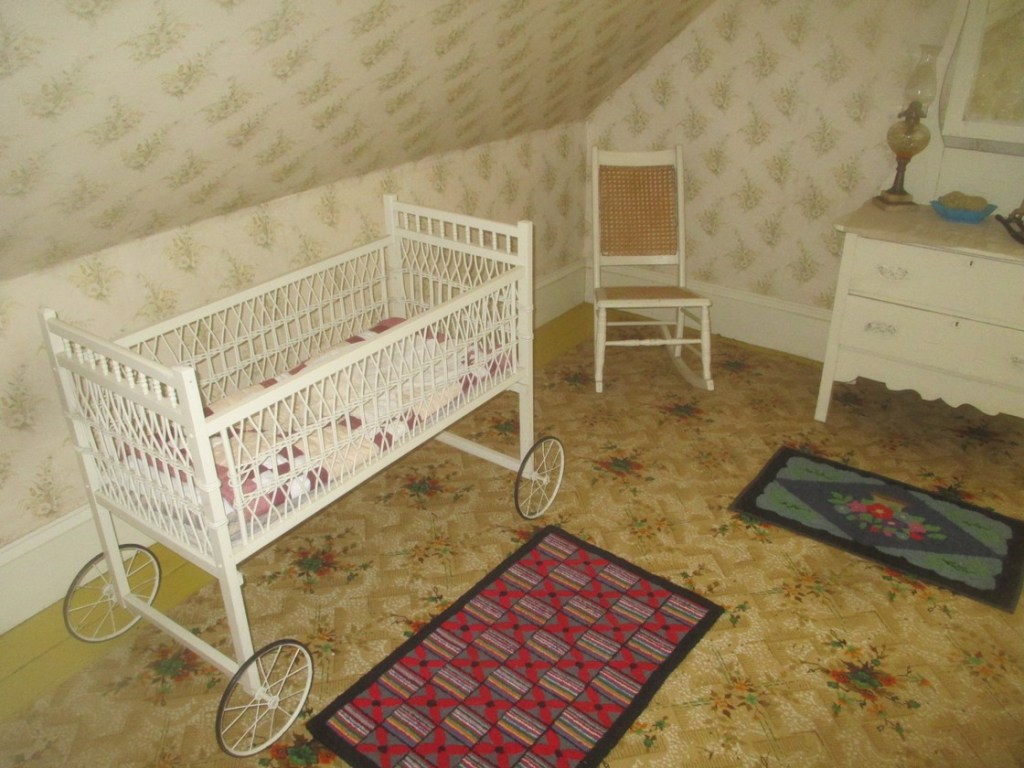

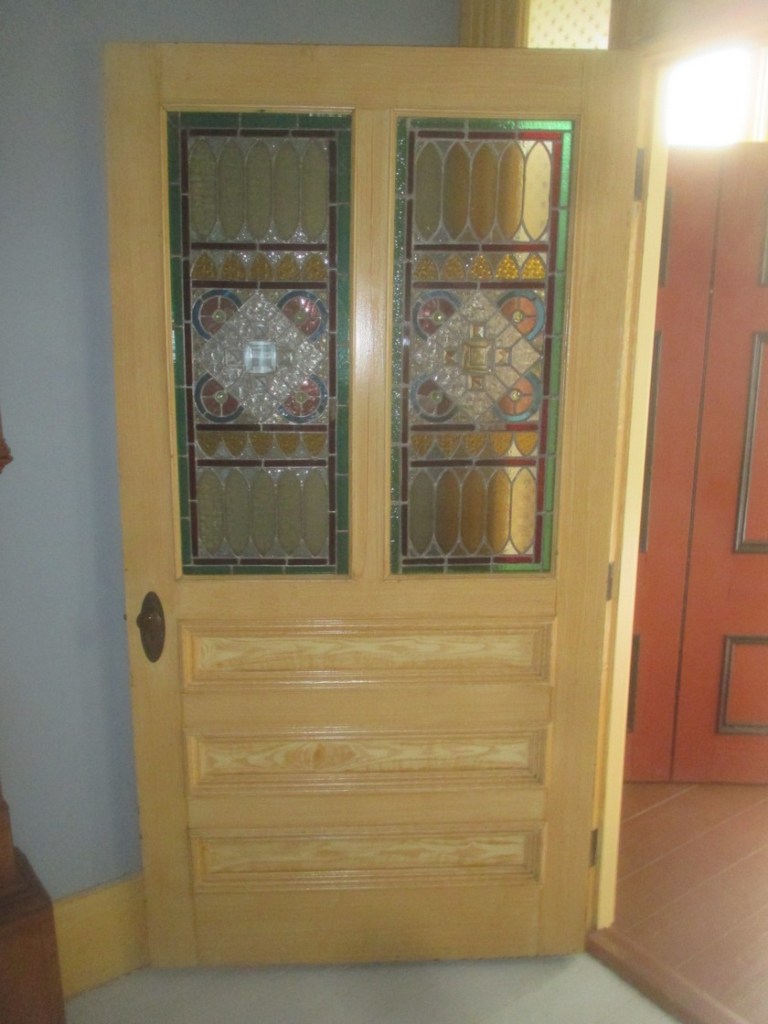
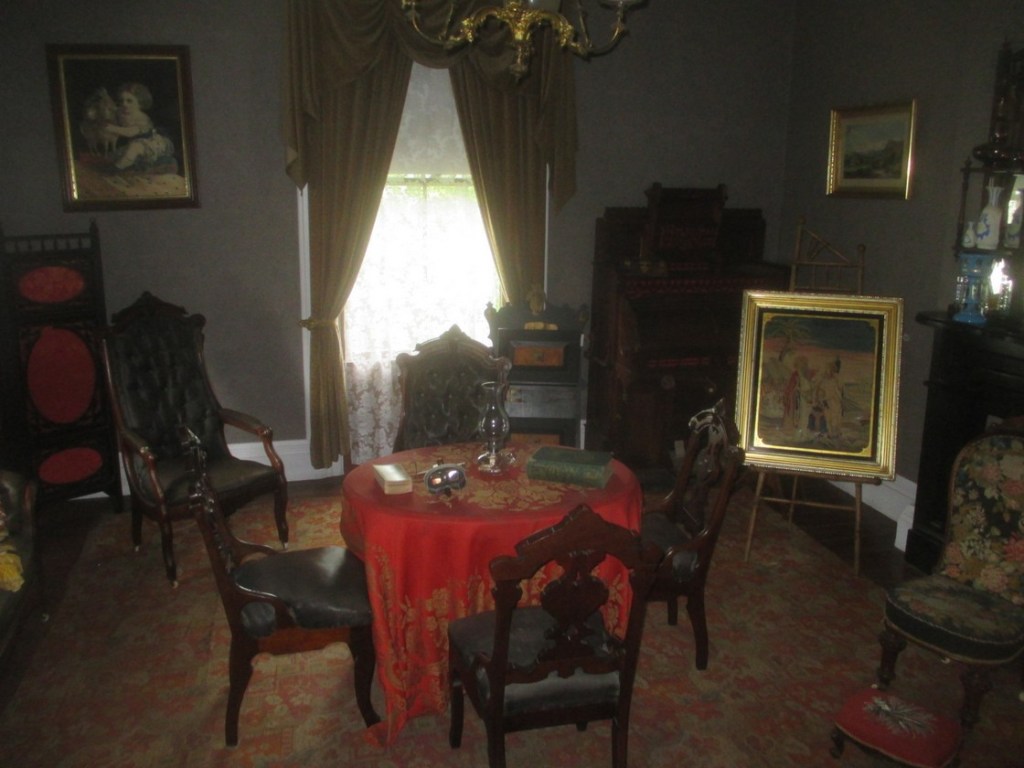

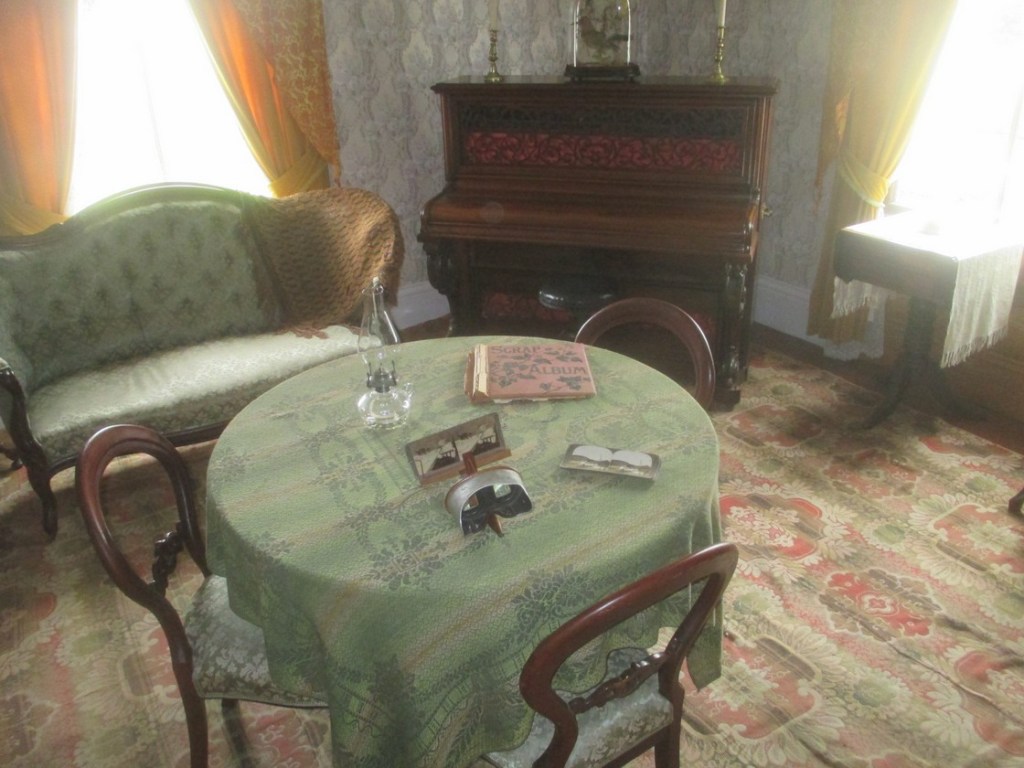


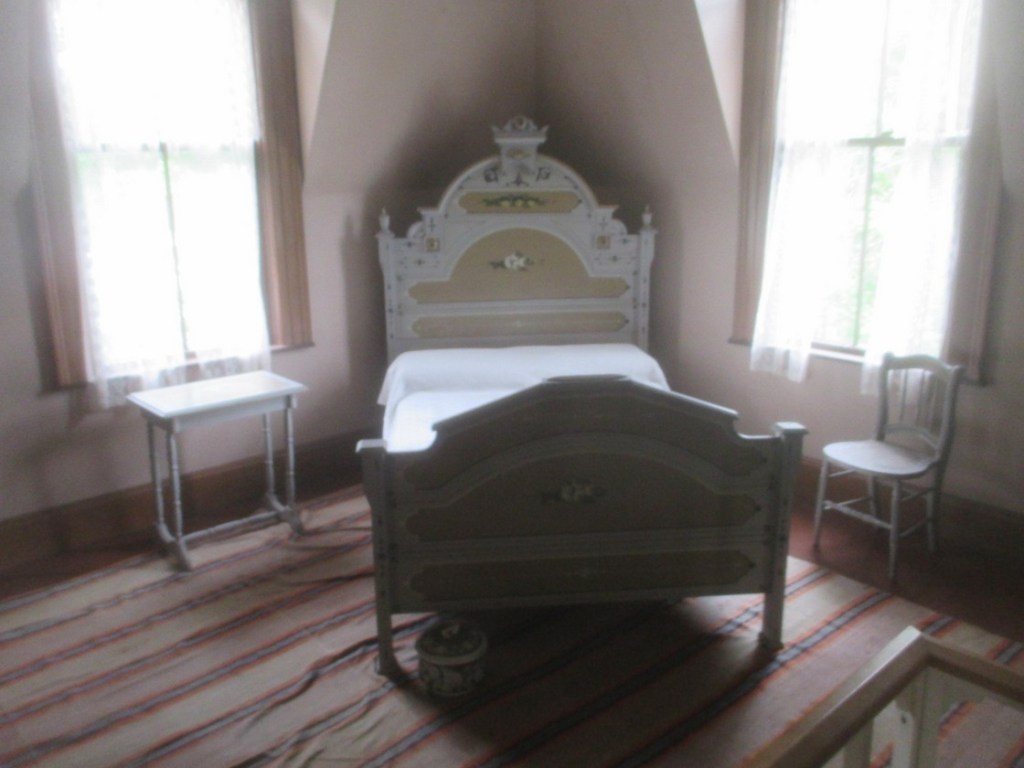
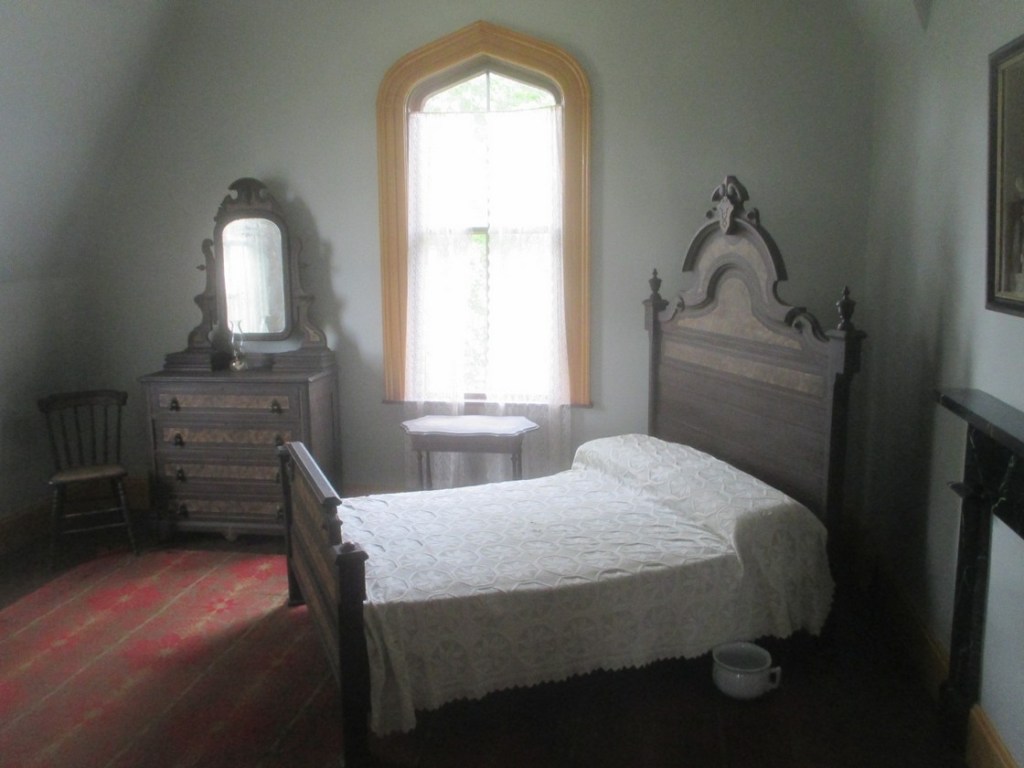
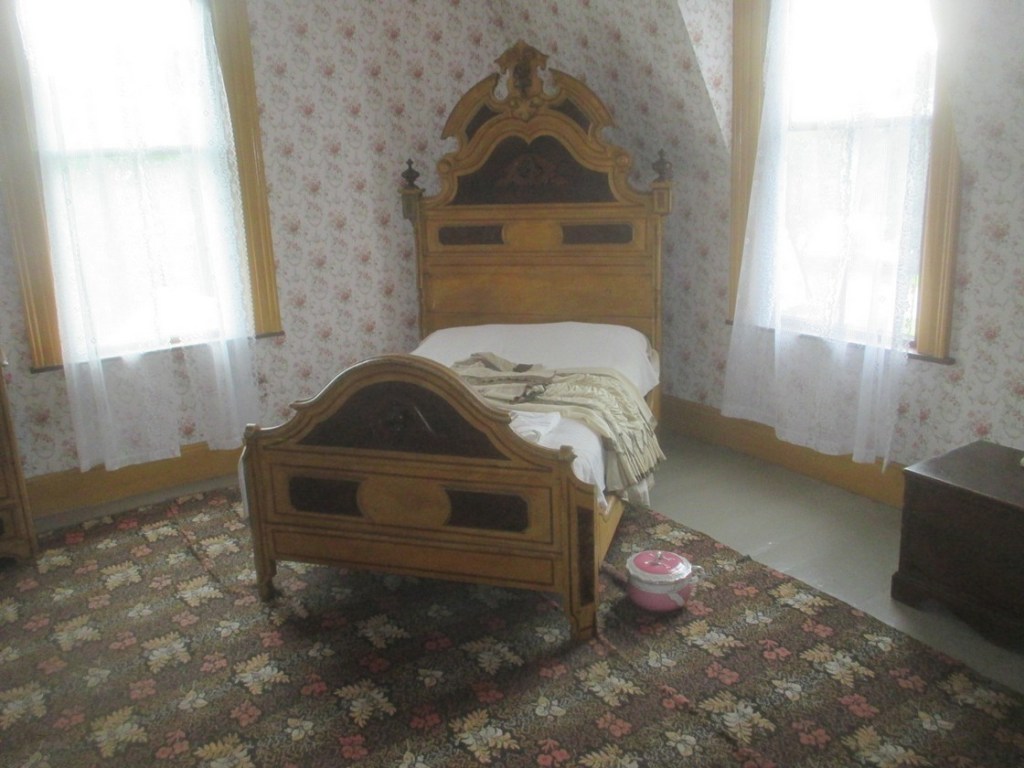

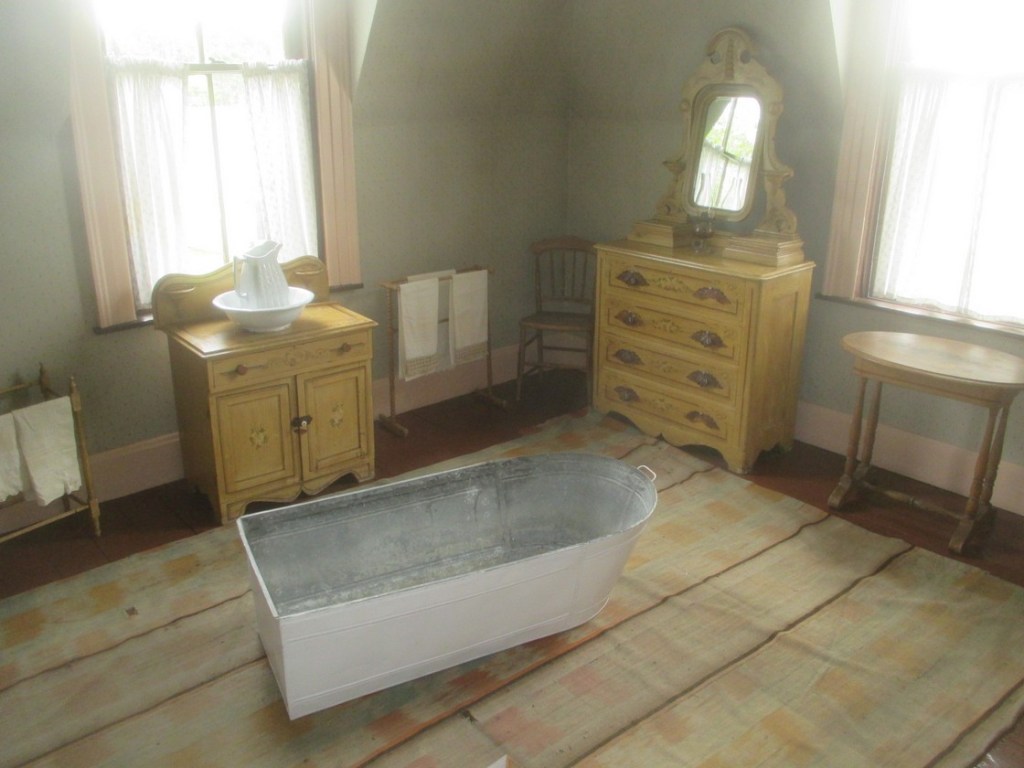

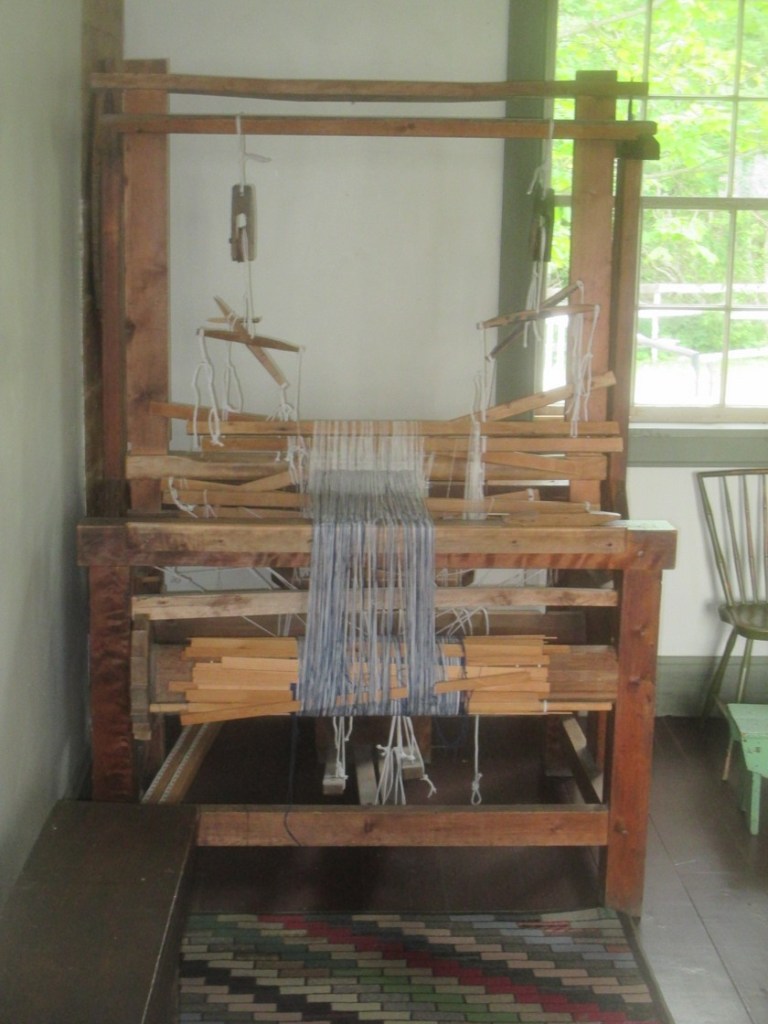
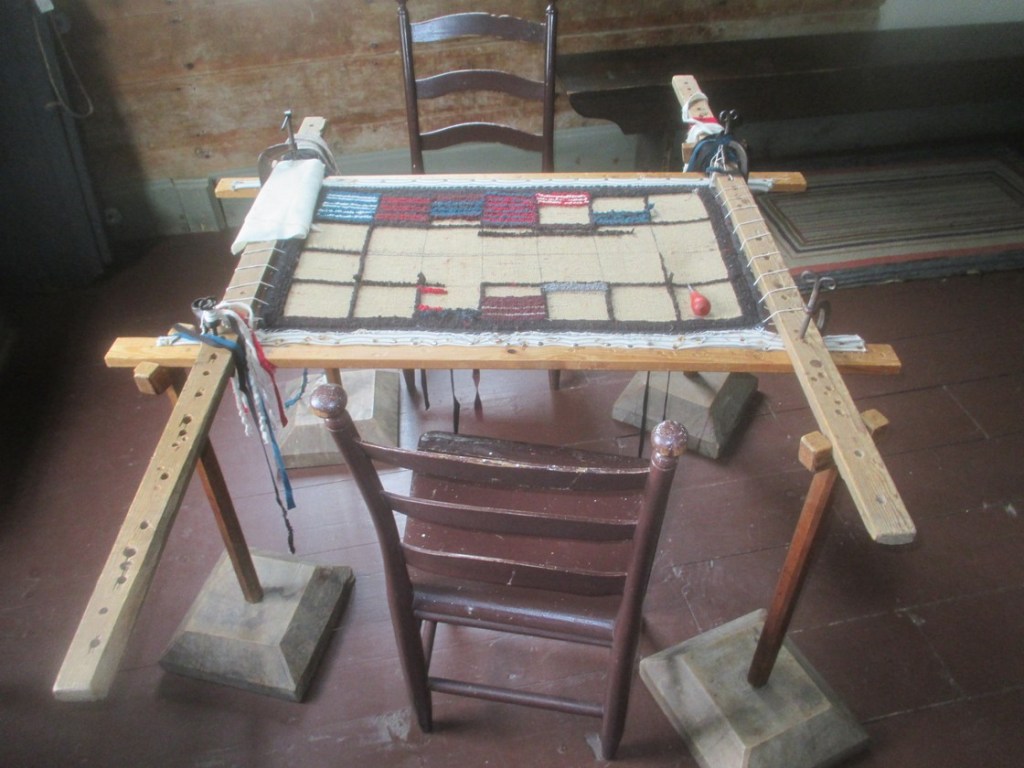
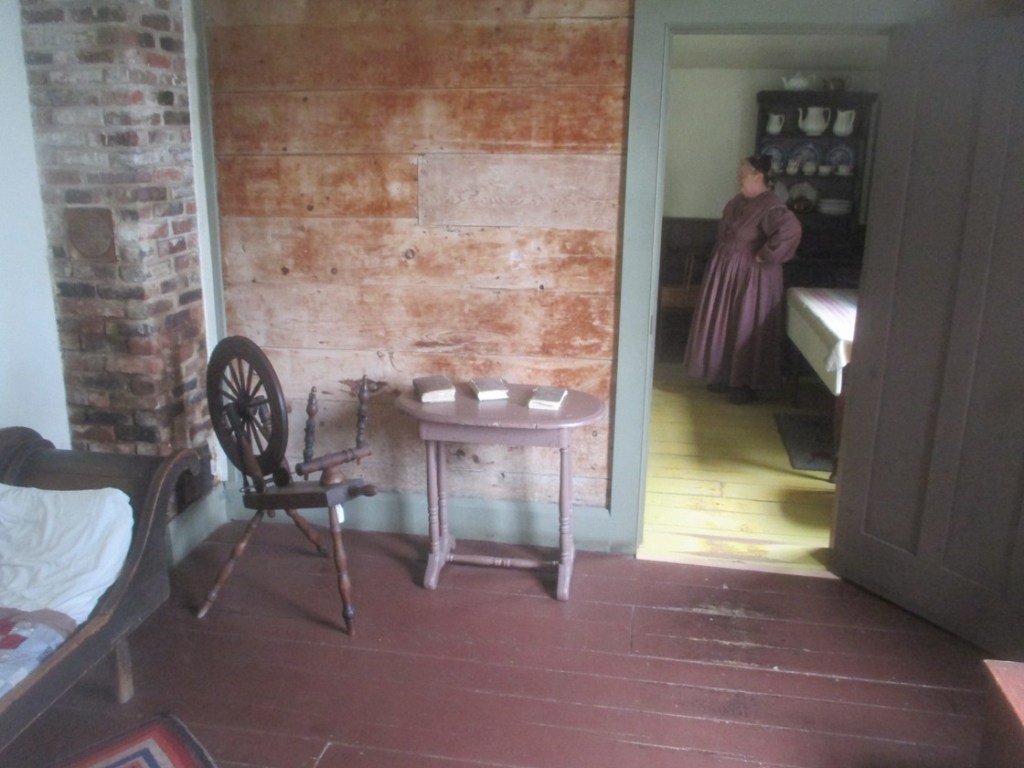
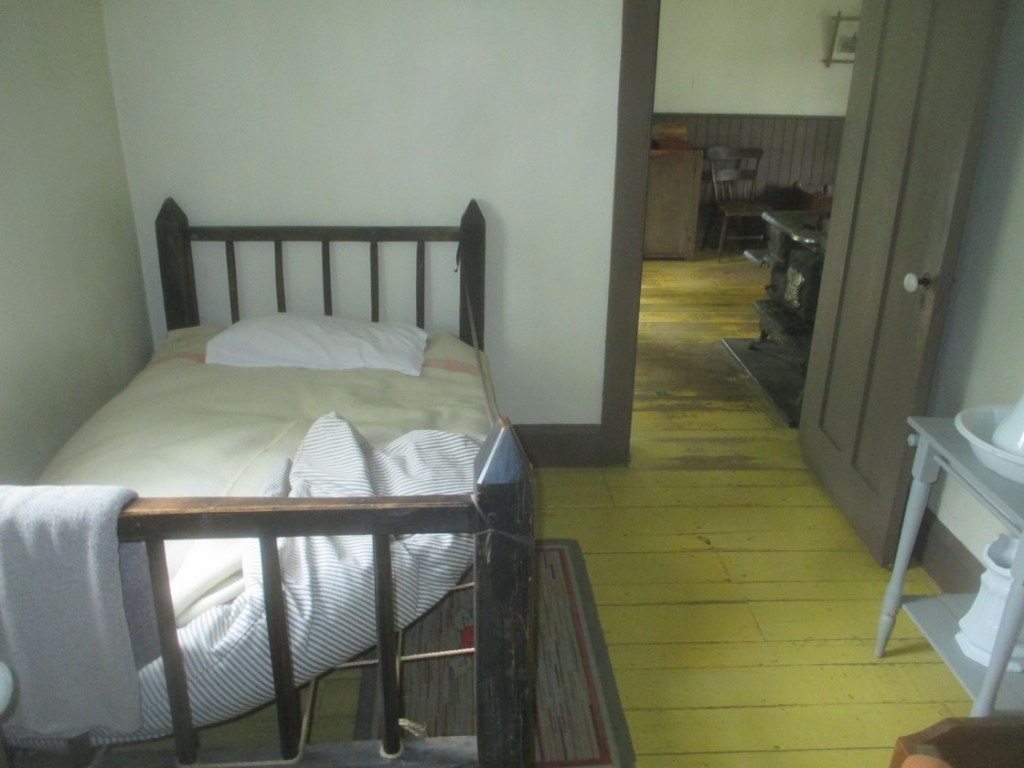
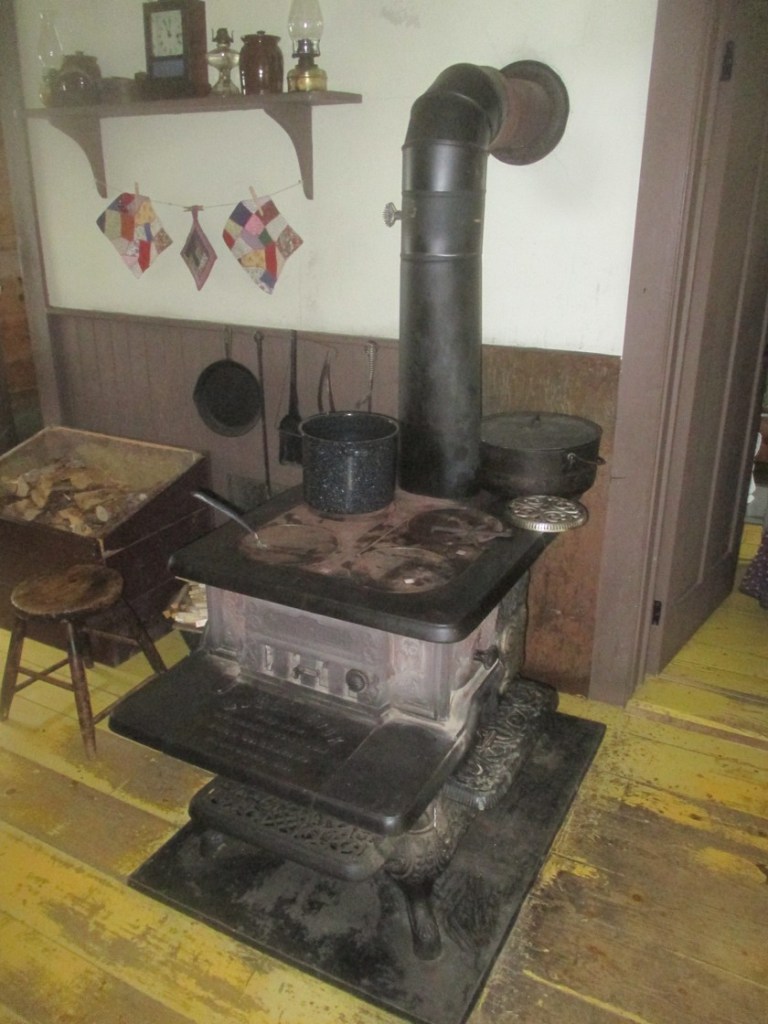

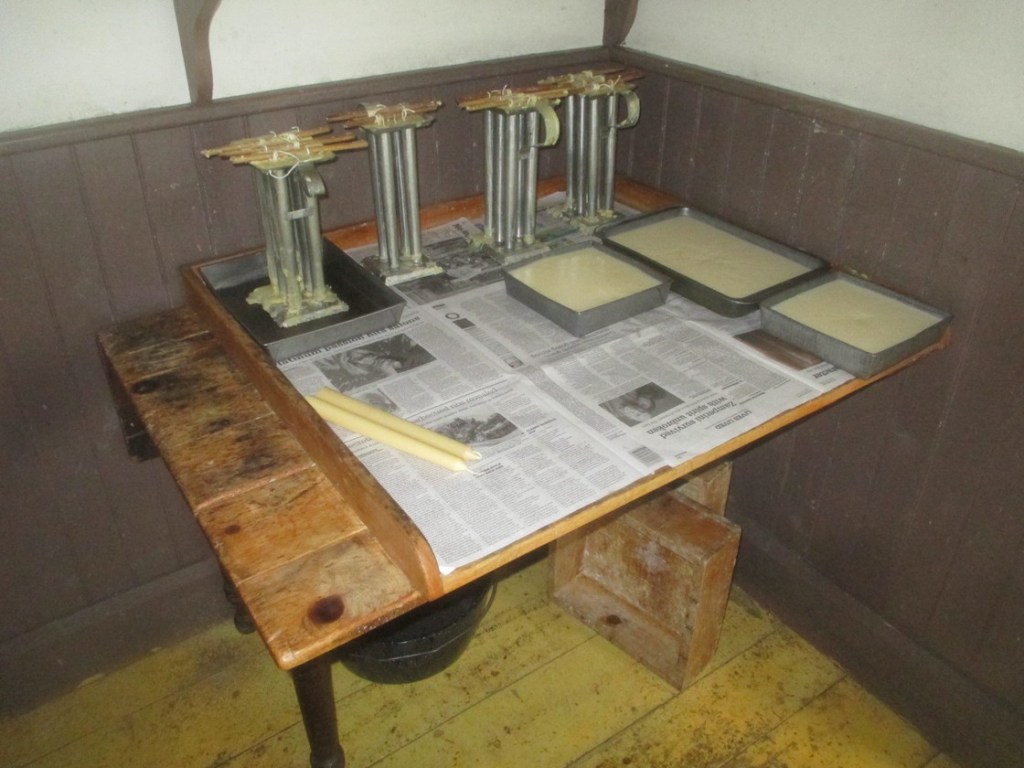
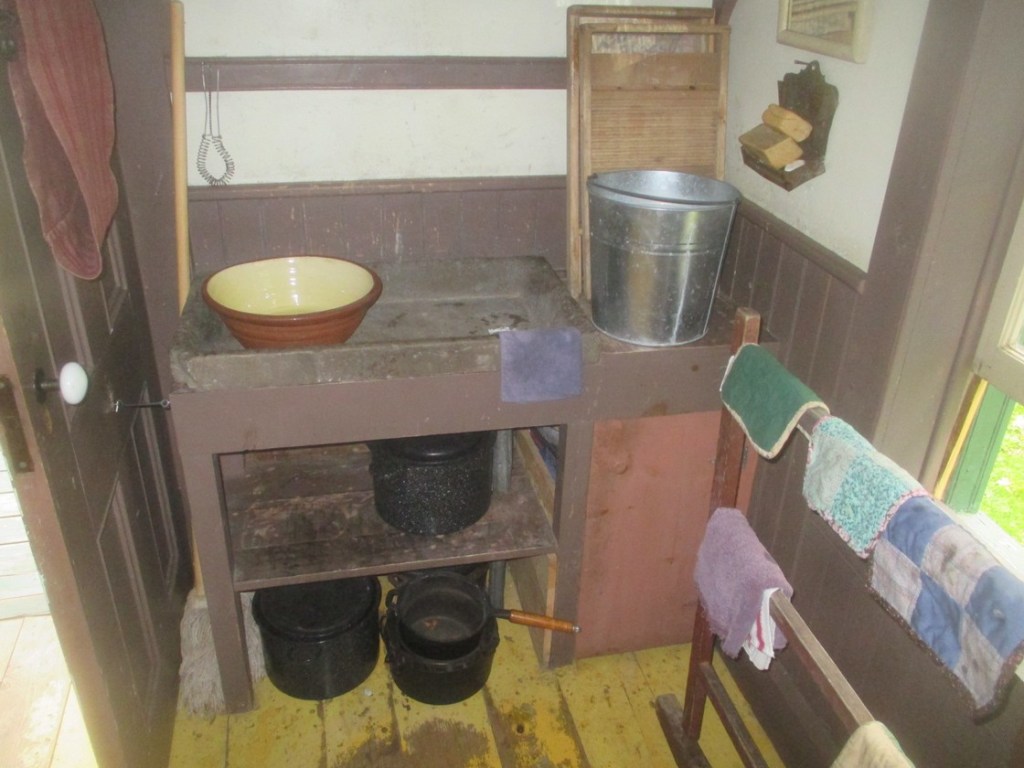
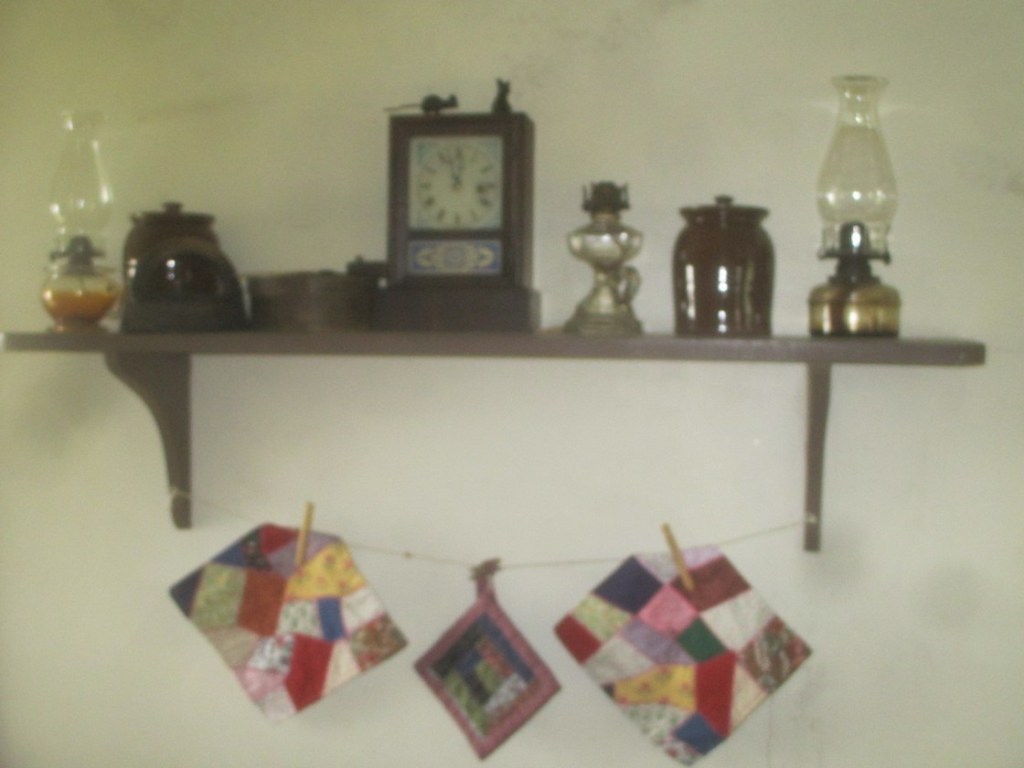
What a gorgeous heritage town!
LikeLike
Honestly, my fairly poor images and average prose do not nearly do it justice. It is one of those places you have to visit to “get”. I was entranced.
LikeLiked by 1 person